Matador Network's Blog, page 96
November 18, 2024
14 Iceland Waterfalls That Look Better in Winter: A Visual Guide

Iceland’s natural beauty is no secret: Laugavegur Trail for a stunning, otherworldly hike; many (many) opportunities to see the northern lights, which will be stronger than normal over the next couple years; ice caves; and no shortage of incredible places to stay. And then there are the waterfalls.
Iceland has thousands of waterfalls (up to 10,000 by some estimates) scattered across its breathtaking landscape. Each is shaped by the volcanic and glacial forces that define the rest of the island. Best of all? Many are also strikingly accessible and just a short hike from the main road. In winter, these natural wonders undergo a stunning transformation, revealing a world of contrasts: icy blues, frosty whites, and rugged black lava rock. Some even freeze. This all comes together to make Iceland one of the world’s most picturesque winter destinations for waterfall seekers, landscape photographers, and those who just want to find solace in nature and who don’t mind the cold.
From iconic sites like Gullfoss and Skógafoss to lesser-known falls like Brúarfoss and Dynjandi, each waterfall unveils its own unique character in winter. This visual guide will lead you through Iceland’s most stunning winter waterfalls, showcasing the beauty that lingers long after the summer crowds and the midnight sun have faded.
We hope you love the tours and stays we recommend! Just so you know, Matador may collect a small commission from the links on this page.
Gullfoss Photo: Sara Winter/Shutterstock
Photo: Sara Winter/Shutterstock Photo: Helena Garcia Huertas/Shutterstock
Photo: Helena Garcia Huertas/Shutterstock Photo: Elena Suviriva/Shutterstock
Photo: Elena Suviriva/Shutterstock Photo: lenggirl/Shutterstock
Photo: lenggirl/ShutterstockGullfoss is one of Iceland’s most iconic waterfalls. In winter, the surrounding landscape is often blanketed in snow, and the powerful falls partially freeze, creating layers of glistening ice.
Height: 105 feet
How to get there: Gullfoss is located along the Golden Circle just 1.5 hours from Reykjavik. The Gullfoss Visitor Center and a dedicated parking area are just a short walk from the falls.
Nearby activities: The nearby Geysir geothermal area and the Thingvellir National Park are must-see stops along the Golden Circle. The Gulfoss Visitor Center hosts the locally run Gullfoss Café, where you can enjoy local food and refreshments. Don’t want to think about planning and transportation? It’s easy to explore the geology of the Golden Circle with a tour.
Seljalandsfoss Photo: zedspider/Shutterstock
Photo: zedspider/Shutterstock Photo: Lukas Gojda/Shutterstock
Photo: Lukas Gojda/Shutterstock Photo: Thomas Schnitzler/Shutterstock
Photo: Thomas Schnitzler/ShutterstockFamous for the trail that lets you walk behind it, Seljalandsfoss transforms in winter with ice formations around the cave behind the falls. The snow-covered landscape and frozen mist add an otherworldly vibe to the already stunning waterfall.
Height: 200 feet
How to get there: Seljalandfoss is a two hour drive from Reykjavik toward the South Coast. There is a parking lot next to the falls but no visitor center. Note that the walking path behind the falls may be icy in winter.
Nearby activities: Skógafoss, another must-see waterfall, and the black sand beach of Reynisfjara are close by. You can also find the LAVA Centre, a volcano and earthquake exhibition, in the town of Hvolsvöllur. A tour of the South Coast on an Arctic truck makes navigating the season easier.
Skógafoss Photo: Bildagentur Zoomar GmbH/Shutterstock
Photo: Bildagentur Zoomar GmbH/Shutterstock Photo: fogcatcher/Shutterstock
Photo: fogcatcher/Shutterstock Photo: DroneTop/Shutterstock
Photo: DroneTop/Shutterstock Photo: Andy Stacy/Shutterstock
Photo: Andy Stacy/ShutterstockKnown for its wide, powerful cascade, Skógafoss is even more striking in winter when the icy surroundings and frosty river below create a monochromatic spectacle of winter beauty.
Height: 197 feet
How to get there: Located in Iceland’s South Coast, Skógafoss is easily accessible and has a nearby parking lot. A staircase alongside the waterfall offers stunning views from above.
Nearby activities: The Skógasafn Folk Museum in the nearby Skógar village is a great option to immerse yourself in Icelandic history. The village also offers guesthouses and cafes.
Svartifoss Photo: zedspider/Shutterstock
Photo: zedspider/Shutterstock Photo: Sirbouman/Shutterstock
Photo: Sirbouman/Shutterstock Photo: Ghing/Shutterstock
Photo: Ghing/Shutterstock Photo: Icelandic Explorer/Visit Iceland
Photo: Icelandic Explorer/Visit IcelandLocated in Vatnajökull National Park, Svartifoss is framed by distinctive black basalt columns. The contrast between the dark basalt and snowy landscape creates a stark, beautiful scene that can only be appreciated during the winter months.
Height: 65 feet
How to get there: Svartifoss is located in the Skaftafell Nature Reserve within Vatnajökull National Park. Skaftafell is a four hour drive east of Reykjavik, but the impressive amount of sights along the road — including Seljalandsfoss and Skógafoss — usually make it longer. Getting to the falls requires a 45-minute hike from the Skaftafell Visitor Center.
Nearby activities: The national park has plenty of trails and highlights including the Svínafellsjjökull Glacier and the Jökulsárlón Glacier Lagoon.
Dettifoss Photo: Adam Major/Shutterstock
Photo: Adam Major/Shutterstock Photo: 9MOT/Shutterstock
Photo: 9MOT/Shutterstock Photo: Lukas Vejrik/Shutterstock
Photo: Lukas Vejrik/Shutterstock Photo: oneinchpunch/Shutterstock
Photo: oneinchpunch/ShutterstockDettifoss is considered one of Europe’s most powerful waterfalls. In winter, the falls’ characteristic grayish tint, derived from volcanic sediment, is intensified by the surrounding snowy terrain, making this one of Iceland’s most imposing winter sights. The falls are located in the Vatnajökull National Park.
Height: 144 feet
How to get there: Dettifoss is located north of the Ring Road. Two gravel roads connect the main road to Dettifoss and conditions may vary depending on the weather. There is a parking area, but a short hike to the falls is required.
Nearby activities: Attractions near Dettifoss include the Krafla Volcanic Area and the Hverir Geothermal Field. The nearby town of Akureyri is the best base to explore the North of Iceland.
Godafoss Photo: Shcherbina Valeriy/Shutterstock
Photo: Shcherbina Valeriy/Shutterstock Photo: Magnifier/Shutterstock
Photo: Magnifier/Shutterstock Photo: evenfh/Shutterstock
Photo: evenfh/Shutterstock Photo: acro_phuket/Shutterstock
Photo: acro_phuket/ShutterstockKnown as the “Waterfall of the Gods,” Godafoss is one of the most picturesque falls in Iceland, especially when the icy blue waters contrast with snow-laden banks. The falls partially freeze during winter and create a mesmerizing spectacle that’s best appreciated during sunrise or sunset.
Height: 39 feet
How to get there: Located just outside the Diamond Circle in Northern Iceland, Godafoss is just a 45 minute drive from Akureyri. The falls are easily accessible with nearby parking. Both sides of the falls are viewable after a short walk.
Nearby activities: The town of Akureyri, just a 30-minute drive away, has restaurants, hot springs, and museums. The scenic Mývatn region is also nearby, perfect for further exploration.
Kirkjufellsfoss Photo: Lukas Gojda/Shutterstock
Photo: Lukas Gojda/Shutterstock Photo: Thampitakkull Jakkree/Shutterstock
Photo: Thampitakkull Jakkree/Shutterstock Photo: Jag_cz/Shutterstock
Photo: Jag_cz/ShutterstockWith Kirkjufell mountain in the background, Kirkjufellsfoss is a favorite for photographers despite being significantly shorter than some of the other highlight waterfalls in Iceland. In winter, the frozen falls and snow-covered landscape with Kirkjufell looming behind make it look like a scene from a fantasy world.
Height: Approximately 16 feet
How to get there: Kirkjufellsfoss is located near the picturesque town of Grundarfjördur on the Snaefellsnes Peninsula. There is a dedicated parking area just a short walk from the falls.
Nearby activities: Kirkjufell mountain, a top photo destination, is just steps away. The town of Grundarfjördur offers dining options and the Snaefellsnes Peninsula has plenty of scenic viewpoints and trails.
Hraunfossar and Barnafoss Photo: Lukas Gojda/Shutterstock
Photo: Lukas Gojda/Shutterstock Photo: Miroslav Denes/Shutterstock
Photo: Miroslav Denes/Shutterstock Photo: Lukas Gojda/Shutterstock
Photo: Lukas Gojda/ShutterstockThese neighboring waterfalls have unique appeal in winter. Hraunfossar is a series of small streams cascading over a lava field that create intricate ice formations. The nearby Barnafoss, which means “children’s falls,” flows more violently, adding a dramatic contrast.
Height: Barnafoss drops about 30 feet while Hraunfossar spans about 295 feet across
How to get there: These falls are located in west Iceland, near the settlements of Reykholt and Borgarnes. Parking is available near the falls, with short pathways leading to viewing platforms.
Nearby activities: The nearby Reykholt village is a picturesque small town with historical significance. There’s also Deildartunguhver, the highest flowing hot springs in Europe, and the Krauma geothermal baths.
Aldeyjarfoss Photo: jo Crebbin/Shutterstock
Photo: jo Crebbin/Shutterstock Photo: Daniel Karfik/Shutterstock
Photo: Daniel Karfik/Shutterstock Photo: Jane Rix/Shutterstock
Photo: Jane Rix/ShutterstockLocated in the Northern Highlands, Aldeyjarfoss combines powerful water flow with striking basalt columns. Snow and ice emphasize the unique rock formations during the winter months, making this a very popular spot for photographers.
Height: 65 feet
How to get there: Aldeyjarfoss is located in the northern Icelandic Highlands, halfway between Akureyri and Lake Myvatn. The rough road leading to the falls requires a 4WD vehicle. Aldeyjarfoss can be approached from two sides. Each side has its own parking lot and requires a short hike.
Nearby activities: Húsavík, the whale-watching capital of Iceland, is a reasonable drive away with several dining and museum options.
Háifoss Photo: Colin D. Young/Shutterstock
Photo: Colin D. Young/Shutterstock Photo: CE Photography/Shutterstock
Photo: CE Photography/Shutterstock Photo: Mathias Berlin/Shutterstock
Photo: Mathias Berlin/ShutterstockLocated near the Hekla volcano in the southern Iceland valleys, Háifoss is one of the country’s tallest waterfalls. Winter makes the hike challenging but rewarding, with views of both the falls and its neighbor, Granni, amid a serene, snowy expanse. It feels remote and otherworldly, with ice formations accenting the dramatic drop.
Height: 400 feet
How to get there: Háifoss is located in the Fossárdalur Valley in South Iceland. Reaching Háifoss in winter requires a 4WD vehicle due to gravel road conditions. A short, rugged trail from the parking area leads to a viewpoint.
Nearby activities: The falls are close to the Hekla volcano and its surrounding valley. Limited dining options mean packing a meal might be necessary.
Dynjandi Photo: Wizilli/Shutterstock
Photo: Wizilli/Shutterstock Photo: John Akerman/Shutterstock
Photo: John Akerman/Shutterstock Photo: MatteoG/Shutterstock
Photo: MatteoG/ShutterstockKnown as the “Jewel of the Westfjords,” Dynjandi is a stunning multi-tiered waterfall that cascades down like a bridal veil over a 100-meter drop. In winter it looks like a natural ice sculpture. Reaching Dynjandi in winter can be challenging due to its remote location in the Westfjords, but those willing to make the journey will be rewarded with a perfect winter postcard.
Height: 328 feet
How to get there: Dyjandi is located in the Westfjords, one of Iceland’s most remote and stunning locations. The falls are accessible by car with a short hike from the parking lot, though road conditions in winter can be challenging.
Nearby activities: Nearby towns like Ísafjördur offer dining and accommodations. Sites such as the Hornstrandir Nature Reserve and the Látrabjarg Birdwatching Cliffs are great for nature lovers wanting to spot arctic foxes and puffins in their natural habitats.
Brúarfoss Photo: Wanut Pratakviriya/Shutterstock
Photo: Wanut Pratakviriya/Shutterstock Photo: Ikunl/Shutterstock
Photo: Ikunl/Shutterstock Photo: PangJee S/Shutterstock
Photo: PangJee S/ShutterstockKnown for its vivid blue color, Brúarfoss is a lesser-known waterfall hidden along Iceland’s Golden Circle. In winter, the icy blue water contrasts beautifully with the snow-covered landscape, creating a surreal sight. The smaller size of the falls means it freezes partially, forming delicate ice crystals, and since it’s off the beaten path, you can often enjoy its tranquil beauty without crowds.
Height: Approximately 10 feet
How to get there: Brúarfoss is part of the Golden Circle in South Iceland. There’s accessible parking near the falls with a short, easy path and a bridge that goes directly above the falls.
Nearby activities: The falls are close to the Geysir geothermal area and Gullfoss. Dining options are available in nearby Laugarvatn.
Kvernufoss Photo: zedspider/Shutterstock
Photo: zedspider/Shutterstock Photo: zedspider/Shutterstock
Photo: zedspider/Shutterstock Photo: Sirbouman/Shutterstock
Photo: Sirbouman/ShutterstockJust a short hike from Skógafoss, Kvernufoss is a lesser-known spot where you can experience the thrill of walking behind the waterfall. In winter, Kvernufoss takes on a mystical quality as ice forms around the edges and the landscape becomes blanketed in snow. The waterfall itself remains partially unfrozen, creating beautiful contrasts between the flowing water and icy surroundings.
Height: Approximately 98 feet
How to get there: The falls require a short, half-mile hike each way from the parking area near Skógafoss. The trail isn’t the most marked, but it’s easy to follow. After 20 minutes you’ll reach the Kvernugil Gorge where the waterfall is located.
Nearby activities: Visit Skógafoss for more waterfall views. You can also visit the LAVA Center in the nearby town of Hvolsvöllur.
More like thisThe Best Way to See and Hike Glymur Waterfall, Iceland's Highest WaterfallMy Husband and I Signed Up for Tango Lessons in Barcelona. It Was the Highlight of Our Trip.

On a recent trip to Barcelona, my husband, two friends, and I raced around trying to see all the famous sights, from the Sagrada Familia to Park Güell and the Picasso Museum. At night, we indulged in tapas and delicious local wine. It was our friend’s first time in Europe, and while there, the four of us wanted to experience something more authentic to get a real taste of local life. Having heard about Airbnb Experiences through work, I found a Tango experience in Barcelona that seemed to fit the bill. After getting the thumbs up from my friends, I booked the experience for all of us with my own funds (this was not a sponsored event).
We hope you love these tango lessons in Barcelona! Just so you know, Matador may collect a small commission from the links on this page if you decide to take to the (rooftop) dance floor.
Arriving to the Barcelona tango lessons
Photo: Airbnb
In the Gothic quarter, we arrived at the apartment building with a manual door elevator that took us to the rooftop. The apartment was easier to find than we expected, as the hosts provided us with pictures of the entrance, door, and walkway beforehand. They welcomed us, and offered us a choice of white wine sangria or beer before leading us onto the patio to listen to a brief history of Tango. Ana Paula, one of our co-hosts, explained to the group of 14—a mix of local Barcelonians and travelers—that tango originated with Spanish and European settlers who made their way to Argentina, describing the dance as “’sad walking.” Tango, she said, is a way to express loneliness, but together. “No hip movements. It is a feeling of an embrace.”
Our other co-host, Jorge, took charge of our dance instructions and set the rules: “No phones, no cameras, no videos, no questions.” He wanted us to be fully present in the moment. We then gathered in his living room–a rectangular space with minimal furniture, a computer for music, and wooden floors– as an energetic Jorge walked us through the steps slowly, apologizing to his neighbors through the floors for the sound of 14 of us clomping above. Jorge would give a set of instructions, and then use a participant for demonstration. He only used the men as helpers. He would hold out a hand, say a woman’s name, and ask, “Can I borrow your partner for a moment?” He would show the steps to the men, then take the female dance partner role to practice with them, using a falsetto voice and batting his eyes, earning all of our delight.
Sometimes only the men would practice their steps while the women, drinks in hand, watched and giggled as their partners learned the new sequence. And vice versa, as the women practiced with each other before partnering up to try it out on the “dance” floor. As we practiced and danced, Jorge clucked his tongue if a move wasn’t completed right, then showed us all how to do it correctly while making a small rolling R bird sound and hands flourishing dramatically. His energy was infectious as we all laughed and studied the steps. We danced for an hour to learn the entire routine, slowly stepping to the song played on the computer. After several practice rounds, we were allowed to grab our phones, and in groups of three or four pairs, we danced while someone else filmed the final sequence as our class memento.
A night filled with tipples, tricks, and tango Our group became fast friends. Photo: Josh Wilking
Our group became fast friends. Photo: Josh Wilking Some of us even became decent tango dancers. Photo courtesy Kelsey Wilking
Some of us even became decent tango dancers. Photo courtesy Kelsey WilkingAfter everyone completed their final performance, the now-newbie tango dancers filled their glasses and headed to the patio to enjoy the city’s nighttime skyline. As we chatted and took pictures, we learned more about each other, laughing and reminiscing about how much fun learning tango had been. It’s easy to get lost in rushing to see all the sights in a city, trying to check every box on your ‘vacation to-do’ list. But connecting with people through a shared purpose was such an effortless way to meet new people and see a completely different side of the city — one I hadn’t expected.
We said our goodbyes to each other and our thanks to Jorge, then shuffled out onto the streets of Barcelona in search of paella and wine. My husband, Josh, isn’t the biggest fan of dancing — rhythm isn’t exactly our strong suit. But tango? It’s something anyone can do. It’s simple, it’s fun, and we didn’t even break a sweat. Our friends loved it, with one even saying it was his favorite thing we did in Barcelona. Despite all the beauty and architectural wonders the city had to offer, his highlight was spending time in a local’s apartment, learning a new dance. The class starts at $27 per person. 
High-Speed Rail Could Soon Cover Several of the Busiest Airline Routes in the United States, Drastically Reducing Emissions

Most of the highest-traffic airline routes in the United States either start or end in New York or Los Angeles. All fly between major hub cities, with at least one end of the route being on a coast. None involve Middle America, or anywhere further from a major body of water than Las Vegas. But the most interesting fact about the US Department of Transportation’s report on the 10 busiest airline routes in the United States, isn’t even included in the data – at least three of the routes could soon be taken by high-speed rail. If this comes to pass, it will be possible for travelers to cut their emissions traveling between these cities by between 70 and 80 percent, according to data from the Federal Railroad Administration and Science Direct.
What are the most popular airline routes in the United States?
Photo: Markus Mainka/Shutterstock
As you may suspect, major cities like New York, Los Angeles, and San Francisco appear repeatedly in the list. Interestingly, Atlanta – home to the busiest airport in the world – only shows up once, and the same goes for Chicago. Denver – with the third-busiest airport in the country – doesn’t make the list at all.
Miami to New York City – 18,809 passengers per dayLos Angeles to San Francisco – 17,527 passengers per dayLos Angeles to New York City – 13,856 passengers per dayNew York City to Orlando – 13,302 passengers per dayChicago to New York City – 11,036 passengers per dayAtlanta to New York City – 9,691 passengers per dayNew York City to San Francisco – 9,142 passengers per dayLos Angeles to Seattle – 7,836 passengers per dayLas Vegas to Los Angeles – 7,533 passengers per dayBoston to Washington, DC – 7,193 passengers per dayWhere can high-speed rail replace these routes?
Photo: Krtz07 /Shutterstock
According to the High Speed Rail Alliance, the first stretch of high-speed rail infrastructure between San Francisco and Los Angeles is currently underway in the state’s Central Valley, with work currently being done on a 171-mile stretch. The line is expected to open late in this decade to connect the cities in about three hours at 217 miles per hour.
Another in-proress stretch of rail will connect Los Angeles and Las Vegas. Brightline aims to connect Vegas to Rancho Cucomungo, just outside LA, beginning in 2028. The 218-mile trip will take just over two hours including at least one stop along the way, in Victor Valley. Interestingly, the bulk of the route will proceed in the median of the I-15 corridor, so train passengers can watch car travelers crawl along as they whizz by in a more efficient, more enjoyable, and more sustainable manner.
Amtrak’s Acela train connects Boston to Washington, DC, in about 6.5 hours. However, there are talks and ideas about making an even faster train between the two cities. The Northeast Maglev concept plans to connect DC and New York in about an hour, and by adding a Boston leg would connect several major cities along the eastern seaboard, also including Baltimore and Philadelphia in addition to smaller cities like Providence, in just a couple of hours. Maglev technology, which involves levitating trains, is similar to what is used by some bullet trains in Japan and China. Check out the below video from CityNerd:
What’s exciting about this concept, though it’s not even in planning stages, is that it not only impacts multiple of the high-traffic airline routes on this list, but connects other cities – Philly and Boston, New York and Baltimore – that see ample daily traffic between themselves already. Brightline currently operates high-speed rail from Miami to Orlando. To follow development of high-speed rail in the United States and take part in advocacy, follow the High Speed Rail Alliance. More like thisTrain TravelAmtrak Food and Drink Options: Everything You Need to Know Before Your Next Train Trip
More like thisTrain TravelAmtrak Food and Drink Options: Everything You Need to Know Before Your Next Train Trip
In Kentucky, Small Cities Leave a Big Impression. Here Are 5 to Visit.

As my father’s birthplace, Kentucky has always had a special place in my heart. I’ve traveled many of the Bluegrass state’s highways, byways, and waterways. But for this trip, I embarked on a five-day Appalachian journey to five small but mighty cities in Kentucky: Berea, Stearns, Corbin, Pikeville, and Winchester.
When I was a child, my dad told me about the first settlers in Kentucky who carried only the bare necessities. The legendary frontiersman Daniel Boone came through the Cumberland Gap in 1769, marking the way that would lead more than 300,000 settlers through the important gateway to make a new life. Early pioneers had to leave behind most of their possessions, but they brought with them a love of music and the talent to create something lovely from almost nothing. As a result, folks in these small towns take pride in the traditional music, cooking, storytelling, and arts and crafts that have been passed down through generations.
This trip through small-town Kentucky explores the cultural legacy of the state’s early settlers, which can be felt like a strong heartbeat in compact cities that do, indeed, offer big experiences.
BereaThings to do in BereaBerea College
Photo: Minh Truong/Shutterstock
We arrived in Berea from Blue Grass Airport in Lexington shortly before 8 PM. The drive took slightly less than an hour. Our itinerary had us leaving Berea the next morning at 8:30 AM, so our visit was limited. Most shops and sites were closed when we got there and when we left.
Known as the “Crafts Capital of Kentucky,” Berea (pop. 16,129) was named after a biblical town and founded by folks sympathetic to emancipation and abolition. Berea was incorporated in 1890, but the area’s history was highly influenced by the founding of Berea College in 1855.
Unlike any other college, Berea College was the first integrated, co-educational college in the South and has not charged student tuition since 1892. A private liberal arts work college, Berea College continues a tradition of requiring all students to work 10 to 20 hours in different jobs around the campus to pay for textbooks and room and board. Berea College has 1,600 students, mostly from Appalachia but also from around the world.
Berea College: 101 Chestnut St, Berea, KY 40403
Where to eat and drink in BereaBoone Tavern Restaurant
Photo: Jackie Sheckler Finch
Stepping into the Historic Boone Tavern Hotel and Restaurant, we stashed our luggage at the front desk and headed straight to the restaurant since it was almost closing time. The smell of the tavern’s legendary spoonbread let us know this was going to be a memorable meal.
Founded in 1909 and named in honor of frontiersman Daniel Boone, the tavern is owned by Berea College and has long been a favorite on Berea’s College Square. The menu has plenty to tempt any palate. My choice was the comforting chicken flakes — creamed chicken served in a crisp potato nest with mashed potatoes, green beans, and cranberry-orange relish. Boone Tavern also serves alcoholic beverages — a wide list of them, in fact, since 2014.
But what makes dining at Boone Tavern particularly special is that every lunch and dinner starts with a complimentary serving of the restaurant’s famous spoonbread. The creamy, pudding-like dish got its name because it’s served with a spoon and usually topped with a dollop of butter, honey, or sorghum. If you want to serve it at home, the recipe is below.
Berea Spoonbread
Ingredients:
3 cups whole milk
1 cup plain cornmeal
1 teaspoon baking powder
3 large eggs
4 tablespoons butter
1 teaspoon salt
Directions:
Scald the milk, stir in cornmeal, and bring just to a boil, making mush. Remove from heat. Stir in butter until melted. Cool. Beat eggs to a froth with salt and baking powder. Add to cornmeal mixture. Beat with hand mixer for 2-4 minutes. Pour into a pre-heated buttered pan. Bake at 350 degrees Fahrenheit for 30-45 minutes or until nicely browned.
Before heading out the next morning, we enjoyed an early breakfast in Boone Tavern. Buttermilk biscuits, pork sausage gravy, and sunny-side-up eggs for me. Other diners said the chia pudding was great: coconut milk, honey, house-made granola, muffin, fresh berries, or banana.
Boone Tavern Restaurant: 100 Main St., Berea, KY 40403
Where to stay in BereaHistoric Boone Tavern Hotel
Photo: Jackie Sheckler Finch
The story goes that in 1908, Eleanor Frost — wife of Berea College President William Goodell Frost — hosted 300 overnight guests in the president’s home and served meals to 1,500 people. Not surprisingly, that’s when Eleanor Frost decided the college needed a hotel.
In those days, electric lighting and indoor bathrooms were not common. But the new Boone Tavern Hotel that opened in 1909 had the newfangled electricity in its 25 guest rooms. Before long, the hotel expanded to a third floor and added indoor bathrooms in 1915. Over the years, the smoke-free Boone Tavern Hotel grew to 63 guest rooms, a cafe, a restaurant, and a reputation as one of the finest small inns in the South.
Checking into my overnight room, the friendly desk clerk handed me a metal key instead of the customary plastic key card used by most hotels, and I could see why Boone Tavern Hotel has so many return guests. Reminding me of my grandmother’s Kentucky farmhouse guestroom, my room had lovely handcrafted wooden beds, a dresser, a desk, and a chair. The bathroom was large with a walk-in shower plus plenty of hot water and good water pressure.
Historic Boone Tavern Hotel: 100 Main St., Berea, KY 40403
StearnsThings to do in StearnsBig South Fork Scenic Railway
Photo: VioletSkyAdventures/Shutterstock
About 90 minutes from Berea is the little town of Stearns (pop. 1,222) where we boarded the Big South Fork Scenic Railway for a 45-minute train ride to the former coal town of Blue Heron. The clackety train with its six passenger cars passed through beautiful wilderness where we could look outside of our open train window to see wandering streams and steep-walled canyons.
Now an outdoor museum managed by the National Park Service, Blue Heron was once a busy coal mining camp. From 1937 to 1962, hundreds of people lived and worked in this isolated community on the banks of the Big South Fork River.
After extracting most of the coal and timber, the Stearns Coal and Lumber Company pulled out. Without work, most people moved away, too. What immediately caught my eye when we first arrived was the huge coal tipple and the railroad bridge across the river. The tipple is where coal cars brought the coal to be sorted. Views from the bridge are well worth the walk.
In 1989, most of the original buildings were ingeniously rebuilt as “ghost structures.” The 16 steel skeletons of former buildings include life-size photographs of miners and their families, plus taped interviews of former Blue Heron residents.
It was a bit eerie and sad to hear past residents talk about the difficult life in a coal camp. Each ghost structure deals with a particular aspect of Blue Heron life, such as school, church, and women’s life. Few children finished school beyond the eighth grade. Some only went until they were old enough to work. In the tape recording, one full-grown man noted that he regretted not having more education, so he asked the teacher if he could return and learn. She agreed. The older man sat with fourth-grade students. And he learned.
Big South Fork Scenic Railway: 66 Henderson St., Stearns, KY 42647
Where to eat and drink in StearnsWhistle StopView this post on InstagramA post shared by Whistle Stop Restaurant (@whistle_stop_restaurant)
Finding a place to eat in Stearns was simple. We got off our train ride on the Big South Fork Scenic Railway, walked into the train depot, and sat down at the Whistle Stop cafe. The place was hopping with hungry diners, but we were quickly waited on by an efficient waitress.
My fried chicken sandwich was okay, as were the onion rings. But I was already pretty full from the beer cheese and pretzel appetizer. I was surprised to learn that a small Kentucky town I’d be visiting is known as the Beer Cheese Capital of the world. More about that later.
Whistle Stop: 66 Henderson St., Stearns, KY 42647
Corbin Things to do in CorbinColonel Harland Sanders Park
Photo: Jackie Sheckler Finch
A 50-minute drive from Stearns brought us to Corbin where we spent the rest of the day and night. A very sweet, walkable little town (pop. 7,843), Corbin is home to Colonel Harland Sanders’ original Kentucky Fried Chicken restaurant. Although Sanders died of leukemia on December 16, 1980, at age 90, his image is still very much alive in Corbin.
Dedicated in 2015, Sanders Park honors Corbin’s famous son. Located on the main shopping street, Sanders Park features a life-size bronze statue of Sanders as well as a Secret Recipe Garden containing some of the 11 herbs and spices used in Sanders’ famous, secret, finger-licking-good recipe.
Before his death, Sanders gave millions to hospitals, schools, and charities. “There’s no reason to be the richest man in the cemetery. You can’t do any business from there,” Sanders is quoted on a park plaque.
Sanders Park:201 S. Main St., Corbin, KY 40701
Pinball Museum of Corbin
Photo: Jackie Sheckler Finch
Bells ring. Lights flash. Queen’s Freddie Mercury belts a tune as Elton John adds his music from a nearby machine. Floating over the room is oldies-but-goodies songs, primarily from the 1970s and 1980s. The Pinball Museum of Corbin is definitely entertaining. And different.
This museum doesn’t have “Don’t Touch” rules. In fact, visitors of all ages are invited to play the more than 100 pinball machines, 10 arcade cabinets, two big ball bowlers, and some newer machines that reward gamers with prizes. Machines date from 1969 to 2024, including the world’s largest pinball machine: the 1977 Hercules made by Atari.
You don’t need a pocketful of quarters to play pinball here, either. A single $18 entrance fee allows customers to play the machines all day. Prepare to be pinball pampered with these games – Super Mario Bros, The Godfather, Wrestle Mania, The Sopranos, The Addams Family, Transformers, Aerosmith, The Beatles, Jurassic Park, Halloween, The Wizard of Oz, and many more. My favorite? John Wick.
Pinball Museum of Corbin: 112 S. Main St., Corbin, KY 40701
Cumberland Falls
Photo: Sean Pavone/Shutterstock
Called the “Niagara of the South,” Cumberland Falls forms a 125-foot-wide curtain that plunges almost 70 feet into the boulder-strewn gorge below. On clear nights under a full moon, when the wind and water levels are just right, a “moonbow” will appear like magic. The mist rising from the falls creates the rainbow-like phenomenon, the only one in the Western Hemisphere.
Located in Cumberland Falls State Resort Park, Cumberland Falls has a visitor’s center, a gift shop, restrooms, a snack bar, a big parking lot, and free admission. A walkway to see the falls is easy to maneuver from the parking lot. A more adventurous walk goes past that point to sites below the falls.
Exhibits inside the visitor’s center showcase the area’s geology, history, and Indigenous life. Two live critters attract attention in their private homes. One is a common musk turtle, or stinkpot turtle, which got its name due to its ability to release a foul musky odor from scent glands on the edge of its shell, probably to keep predators away. The other live critter is a diamondback water snake, a large nonvenomous snake that’s frequently mistaken for the venomous cottonmouth. The snake seemed to eye me as I quickly moved past.
Visitors can buy a bag of gemstones in the visitor’s center and see what treasures might be in the bag. A flume outside the center is where you can place the rough material in the bag onto a screen that’s provided. Wash and rinse the material with water from the flume. Never know what gems might be in the material — quartz, ruby, moonstone, topaz, amethyst, garnet, sapphire, emerald, and much more. It’s a fun activity for children and families.
Cumberland Falls: 7351 Highway 90, Corbin, KY 40701
Where to eat and drink in CorbinWrigley Taproom & EateryView this post on InstagramA post shared by The Wrigley Appalachian Eatery (@thewrigleytaproom)
As soon as I saw the old brick wall, I knew where The Wrigley Taproom & Eatery in downtown Corbin got its name. The historic mural depicts a small elfin character pointing to a pack of gum near the restaurant’s front window. The gum? Wrigley’s, of course, founded in 1891 in Chicago by William Wrigley Jr. My favorite gum as a child was Wrigley’s Juicy Fruit.
When restauranteur Kristin Smith saw the 1919 sign, she loved it so much that she named her new restaurant after it. Since 2014, hungry folks have found their way to The Wrigley Taproom & Eatery to enjoy the large selection of craft beer, creative cocktails, and fresh farm-to-fork food.
For dinner, I chose a tasty panko-crusted Springer Mountain chicken breast with mozzarella, house marinara, and Parmigiana Reggiano butter on a toasted brioche bun. I also couldn’t pass up the “big ass pretzel,” a huge salted pretzel with beer cheese and house-made mustard.
As I left, I stopped to read a sign over the restaurant door that describes the restaurant’s goal very well: “The Wrigley Taproom & Eatery strives to care for and nurture our community in mind, body, and spirit, one inspired plate at a time.”
Wrigley Taproom & Eatery: 207 S. Main St., Corbin, KY 40701
Where to stay in CorbinCumberland Falls State Resort Park
Photo: Jackie Sheckler Finch
I’m seldom distracted from breakfast. But on this pre-dawn morning, I left my eggs, sausage, and fruit sitting on the Riverview Restaurant dining room table and headed outside. Cumberland Falls State Resort Park was treating us to a spectacular sunrise. Breakfast could wait.
When we arrived at Cumberland Falls State Park the night before, it was bedtime. I didn’t see much outside but enjoyed the lovely decor inside DuPont Lodge. The lodge features solid hemlock beams and knotty pine paneling, plus massive stone fireplaces and a large observation deck overlooking the Cumberland River meandering through the hillside. Lucky for us, autumn leaves were glorious the next morning, and many folks were taking photos on the DuPont Lodge observation deck.
The lodge has 51 rooms with great views. My room for the night had two full-size beds, lovely flower prints on the wall, two big windows, a TV, and a bathroom with a shower and tub. Be aware that DuPont Lodge and Riverview Restaurant closed on November 1, 2024, for renovations that are expected to take 18 months.
Cumberland Falls State Resort Park: 7351 Highway 90, Corbin, KY 40701
PikevilleThings to do in Pikeville Hatfield & McCoy Driving Tour
Photo: Jackie Sheckler Finch
After an almost three-hour drive, we arrived in Pikeville (pop. 7,754), where we took a Hatfield-McCoy Driving Tour to learn more about the notorious feud. At the local visitor’s center, visitors can pick up a free driving tour brochure that features directions to each site as well as a CD or USB featuring narration and music.
In the beginning, Anderson “Devil Anse” Hatfield and Randolph “Randall” McCoy were friends. Hatfield lived on the West Virginia side of the Tug Fork of the Big Sandy River, which snaked along the boundary between Kentucky and West Virginia. McCoy lived on the Kentucky side of the river. What started the feud? Probably money, jealousy, and a desire for revenge fueled by the Civil War, the theft of a pig, family squabbles, killings, and a doomed love affair between Roseanna McCoy and Johnse Hatfield. It all seemed to culminate in a horrific massacre on New Year’s 1888.
We stopped at an old-fashioned well at what was once Randall McCoy’s home where a bunch of drunken Hatfields decided they would end the feud once and for all. The Hatfield plan was to kill Randall McCoy and his family and burn down their cabin. Randall fled, escaping into the woods. His son Calvin and daughter Alifair were killed in the crossfire. His wife Sarah suffered a crushed skill after being badly beaten by the Hatfields.
Randall died a bitter man at age 88. His death was caused by accidentally falling into a cooking fire where he was badly burned. He lingered for three months before he died.
Devil Anse caught pneumonia and died in his sleep, also at age 88. Before his death, Anse found religion and was baptized in a nearby creek. Tales are that the water in the creek boiled because Anse was so evil.
Pikeville-Pike County Tourism CVB: 685 Hambley Blvd., Pikeville, KY 41501
Where to eat and drink in PikevillePauley Hollow Distillery
Photo: Jackie Sheckler Finch
Part of the Hatfield-McCoy Feud Driving Tour is a stop at Pauley Hollow Distillery. Why? Besides being a great place for a cool bourbon drink, what does this distillery have to do with that historic feud?
Along with producing premium bourbon, apple brandy, rye whiskey, and much more, Pauley Hollow Distillery also creates a drink named “Fuel of the Feud.” The moonshine is produced using water taken from the Randall McCoy Well at the old homestead where much of Randall’s family was wiped out in a Hatfield massacre.
The idea for Fuel of the Feud was envisioned by Bob Scott, a Hatfield descendant who now owns the property where the McCoy cabin was burned. Made with West Virginia corn and Kentucky rye plus barley, the moonshine is 100 proof. A taste sure can open your eyes.
Founded in 2015, Pauley Hollow Distillery is the first legal distillery in Pike County. It’s owned by husband-and-wife team Jessica and Josh Martin. Jessica made one of the best Old-Fashioned cocktails I’ve ever enjoyed. She used Robert’s Reserve Kentucky Straight Bourbon Whiskey, a very small batch four-grain whiskey produced by Pauley Hollow Distillery.
Pauley Hollow Distillery: 91 Kate Camp Branch, Forest Hills, KY 41527
Chirico’s Ristorante
Photo: Jackie Sheckler Finch
Chirico’s sure doesn’t look like a restaurant. It looks more like a beautiful historic home, which is exactly what it is — with an excellent Italian restaurant inside.
After the Hatfields burned the McCoy cabin on January 1, 1888, Randall and Sarah McCoy never returned to their Blackberry Creek property. Governors of both Kentucky and West Virginia urged the Hatfields and McCoys to move away from each other. The McCoys purchased this house near the riverbank on East Main Street in Pikeville, and Randall operated a ferry across the Big Sandy River.
Restauranteur Frank Ray Chirico dreamed of establishing an Italian restaurant in 1981. His idea was to use old family recipes that he passed along to his three sons. Originally the restaurant was located on Pike Street but moved to the former McCoy home on Main Street in 2008.
Judging from my lunch special, the family recipes are perfection. My large serving of pizza baked spaghetti and fettuccine alfredo was a very pleasing combination. It came with a side salad with ranch dressing and house garlic bread sticks. I also had a bottle of Ale-8-One, which sounds like alcohol but is really a soft drink. I’d learn more about Kentucky’s iconic soft drink when we visited our last small town.
Chirico’s Ristorante: 235 Main St., Pikeville, KY 41501
Pearse’s Place
Photo: Jackie Sheckler Finch
After a long day of driving and touring, it was nice to cozy up to a table at Pearse’s Place at Dueling Barrels Brewery and Distillery, order a cold beer, and eat a grilled cheese sandwich and a monster pretzel with beer cheese. Since this is Pikeville, you can probably guess what the distillery name is referencing. Yep, the notorious Hatfields and McCoys. Hence, dueling barrels.
Eastern Kentucky’s first combined beer, bourbon, and moonshine operation, Dueling Barrels Brewery and Distillery opened in 2018 by founders Dr. Pearse and Deidre Lyons. An upstairs bar is named Pearse’s Place in honor of the late scientist and Irish entrepreneur.
Pearse’s Place: 224 Second St., Pikeville, KY 41501
Where to stay in PikevilleHampton Inn
Photo: CodyThane/Shutterstock
Sometimes it’s nice to check into a chain hotel that you know will be modern, quiet, and comfortable. That’s the Hampton Inn in the heart of downtown Pikeville. My large room had a queen-size bed, microwave, mini-fridge, 50-inch HDTV, work area, and ergonomic seating. The hotel also features an indoor heated pool, fitness center, business center, and free WiFi.
But you know what I did? Got in bed and went to sleep. The day had been long and filled with fascinating stories and stops, but I was ready to rest. The next morning, it was breakfast at 7 AM and departure at 8 AM for the final small town on my itinerary.
Hampton Inn: 831 Hambley Blvd., Pikeville, KY 41501
Winchester Things to do in WinchesterCreative Coffees Roastery
Photo: Jackie Sheckler Finch
After a two-hour drive from Pikeville, it was great to stretch our legs and smell the fresh-roasted coffee at Creative Coffees Roastery in Winchester (pop. 19,254). Opened in 2009, Creative Coffees was founded by Debbie Hohman to help school groups and nonprofits raise funds for many different causes by selling special coffee. Creative Coffees also provides coffee service to restaurants, businesses, churches, and other folks who appreciate a tasty brew.
Debbie’s husband Jeff Hohman is one of Creative Coffees’ master roasters. The company uses the highest quality Arabica beans from Central and South American countries. Creative Coffees offers free tours and tastings.
Creative Coffees Roastery: 215 E. Broadway St., Winchester, KY 40391
Ale-8-One Bottling Co.
Photo: Jackie Sheckler Finch
A successful businessman, George Lee Wainscott was fascinated when he first saw a carbonation machine. Why not create his own soft drink company, he thought? That’s what he did in 1902, operating out of a building in Winchester. Developing his own soft drink formula, Wainscott named his first cola product Roxa-Kola in 1906 after his wife, Roxanne.
But the nation’s largest cola company, Coca-Cola, filed a lawsuit against Wainscott and other independent cola makers. Wainscott won the lawsuit and also an appeal. However, he decided to create another recipe and drop the Kola name. The result was a combination of ginger with citrus.
What to name his new product? Wainscott was smart. He held a contest at the 1926 Clark County Fair to choose a name. The winner? A young fairgoer suggested the new soft drink be named after what it was — the latest thing. At the time, slang for the latest thing was “a late one.” Wainscott shortened that to Ale-8-One.
Other Ale-8-One flavors are cherry and orange cream. The drink also comes in zero sugar and caffeine free. Free factory tours are offered which include Ale-8-One samples.
Ale-8-One Bottling Company: 25 Carol Road, Winchester, KY 40391
Bluegrass Heritage Museum
Photo: Jackie Sheckler Finch
The beautiful 1895 Victorian-era home of Dr. John Ishmael, which later served as a hospital, is now a museum. The Bluegrass Heritage Museum opened on October 12, 2004, and is filled with three floors of galleries dedicated to preserving the interesting history of Clark County. Each gallery concentrates on different aspects of history such as the Civil War, agriculture, telephones, barber shops, quilts, military history, slavery, and much more.
In 1927, Dr. E. P. Guerrant bought the private home and converted it into a hospital: the Guerrant Mission Clinic and Hospital. The hospital closed in 1971, but the first floor remained open as a clinic until 1989.
In the Guerrant Clinic and Hospital Rooms galleries on the museum’s third floor, you can see the operating room, scrub room where doctors and nurses prepped for surgery and cleanup, patient room, and more. Displayed on a wall is a bill for child delivery in 1947 — $141.35 for the operating room, medications, infant care, and a 10-day hospital stay.
My favorite gallery was Homer Ledford’s Workshop, which celebrates the artistry of the bluegrass musician and master instrument maker. He taught woodworking at the local high school until 1963 and was the inventor of the dulcitar (a combination of the dulcimer and the guitar) and also a maker of dulcijos (a combination of the dulcimer and the banjo) and dulcibros (a combination of the dulcimer and the dobro).
During his lifetime, Ledford made 6,014 dulcimers, 475 banjos, 27 mandolins, 26 guitars, 18 ukuleles, 13 dulcitars, three dulcijos, three dulcibros, four violins, and one bowed dulcimer.
Three of his instruments are in the Smithsonian Institute in Washington, DC: an Appalachian dulcimer, a dulcitar, and a fretless banjo.
Bluegrass Heritage Museum: 217 S. Main St., Winchester, KY 40391
Leeds Center for the Arts
Photo: Jackie Sheckler Finch
One of Winchester’s first movie houses, the Leeds Theater has been an important part of the community since 1925. The name came from rearranging the letters of the owner, S.D. Lee. When the theater closed in 1986, the Winchester Council for the Arts restored it to its original appearance and reopened it in 1990 as the Leeds Center for the Arts.
A community gathering place, the theater features theatrical performances, concerts, art galleries, and educational programs. It also emphasizes providing a safe space where children can “learn to lead, discover their voice, and are valued for their uniqueness” through the education programs.
Leeds Center for the Arts: 37 N. Main St, Winchester, KY 40391
Where to eat and drink in WinchesterSmokin’ Howard’s Sports Bar & Grill
Photo: Jackie Sheckler Finch
The smoker on the sidewalk in front of this cafe is a definite giveaway. Smokin’ Howard’s Sports Bar & Grill serves some mighty delicious Southern comfort food and scrumptious barbecue made from Paul Howard’s family recipes. It also had my favorite beer cheese. After all, we are in Winchester, said to be the birthplace of that tangy cheese dip.
The story goes that in the 1930s, cousins Joe and Johnnie Allman were looking for a complimentary concoction that would make customers at the Driftwood Inn on the Kentucky River in Winchester thirsty enough to buy more drinks. The result was a spicy beer cheese dip served with saltines and veggies. The dip drew many followers and, of course, increased drink sales.
Today, Winchester has a Beer Cheese Trail along with a Beer Cheese Festival, held the second Saturday of each June in historic downtown Winchester. Beer cheese fans can get a Beer Cheese Trail Digital Passport delivered via text or email that showcases 15 beer cheese stops in Winchester. The more stops you make on the trail, the more freebies you earn.
My lunch choice at Smokin’ Howard’s was a pulled pork sandwich with onion rings and greens. All of it was great, but I could have made a meal out of those greens and beer cheese.
Smokin’ Howard’s Sports Bar & Grill: 20 N. Main St., Winchester, KY 40391
Loma’s at the Opera House
Photo: Jackie Sheckler Finch
For our last evening on the trip, we dined at Loma’s at the Opera House. Built in the late 1800s, the building was originally a cultural center for the area and later a sewing factory. Major renovations turned it into Loma’s fine restaurant in 2003.
A classy and comfortable restaurant, Loma’s has a great menu including beer cheese grits topped with garlic butter, sautéed shrimp, cherry tomatoes, roasted corn, candied bacon, and scallions. Loma’s is one of the stops on the Beer Cheese Trail. Someday, I hope to return and check off the rest of those great beer cheese places.
Loma’s at the Opera House: 103 S. Main St., Winchester, KY 40391
When to visit small cities in Kentucky and how to get around
Photo: Anne Kitzman/Shutterstock
Autumn is an ideal time to visit these small cities in Kentucky. The leaves are so colorful, and the temperatures are not too hot or too cold. Summer travelers are gone, so most attractions are not packed.
I flew into Blue Grass Airport (LEX) in Lexington, Kentucky. I flew American Airlines, which has the largest presence at the airport with around half of the airport’s flights. The airport is easy to maneuver and staffed with friendly folks.
To travel to all the cities on my itinerary, I rode in a shuttle with a driver. It would be best to drive your own vehicle or rent one at the airport because this itinerary does travel quite a bit of miles. 
The Best Jacksonville, Florida, Airbnbs on the Beach and in the City

According to locals, Jacksonville is one of Florida’s best-kept secrets. “We’re like a beach town with a big side of country,” says resident Jay Dodson to Matador contributor Matthew Meltzer. Jacksonville covers a lot of ground; the sprawling metropolis claims 22 miles of white-sand beaches, while the historic districts are lined with a mix-match of architectural styles from Colonial Revival to Mediterranean influences. If you’re looking for a winter sun destination that marries a laid-back beach lifestyle with city art culture, offers warm hospitality with zero pretension, and a small-town feel, you might want to put often overlooked Jacksonville in the mix. It’s also one of the most affordable places on the Sunshine State’s coast, making family vacations do-able. On the subject of budget-friendly, opting for an Airbnb will help with budgeting as well as giving you a space to kick off sandy shoes and unpack a cooler after a day on the coast. From one-bedroom rentals to mansions with outdoor pools, these are the best Airbnbs in Jacksonville.
The best Airbnbs in Jacksonville for solo travelers and couplesConverted 1-bed barn on a family-run pecan farm Photo: Airbnb
Photo: Airbnb Photo: Airbnb
Photo: Airbnb Photo: Airbnb
Photo: Airbnb Photo: AirbnbSee more photos
Photo: AirbnbSee more photosFor something with character, check out this barn conversion. You won’t forget a stay here in a hurry — the bed has been constructed in the back of an old truck. It’s not all gimmick, though; past guests have rated this one of the best Airbnbs in Jacksonville. The studio has everything you need: a small kitchenette, a private bathroom with a tub, a comfortable living area, and a fire pit with outdoor seating. The barn is on a small pecan orchard in the countryside on the city’s outskirts.
Two guests, one bedroom
Price: $150 per night
 Photo: Airbnb
Photo: Airbnb Photo: Airbnb
Photo: Airbnb Photo: Airbnb
Photo: Airbnb Photo: AirbnbSee more photos
Photo: AirbnbSee more photosThis is a great little studio for a couple or solo traveler looking for a stylish Airbnb in Jacksonville’s Historic District. The recently renovated garage studio is open-planned and has a pretty balcony with park views. The kitchen has everything you need, including all the utensils, an electric stove, and a breakfast bar with seating for two. The Historic District is a super part of town stay if you’re visiting for the first time as it’s within walking distance to parks, shopping, and dining. Many of the buildings in this area were tragically lost in the Great Fire of 1901, and most of what you’ll see today is a result of rebuilding efforts. Strolling through the neighborhood, you’ll note a range of architectural styles, from the Gothic Revival of St. John’s Cathedral to the Art Deco of the Florida Theatre.
Two guests, one bedroom
Price: $105 per night
 Photo: Airbnb
Photo: Airbnb Photo: Airbnb
Photo: Airbnb Photo: Airbnb
Photo: Airbnb Photo: AirbnbSee more photos
Photo: AirbnbSee more photosAnother perfect find for one or two guests is this cozy cottage in Springfield. It’s one of Airbnb’s top ten percent homes on the site. These prime rentals are given this status for excellent guest reviews and the host’s communication and service. Springfield is just north of Downtown Jacksonville. It’s also one of the oldest planned residential communities in the state. You’ll find breweries, entertainment venues, and a slooth of excellent restaurants and coffee shops, all within walking distance of the cottage. The Airbnb is actually quite a recent build. It was constructed in 2017 and has recently been given a fresh coat of paint. There’s a spacious screened-in front porch and a backyard to relax on warm evenings, and the host can arrange extras like floral arrangements, charcuterie boxes, and even an outdoor picnic for your arrival.
Two guests, one bedroom
Price: $60 per night
 Photo: Airbnb
Photo: Airbnb Photo: Airbnb
Photo: Airbnb Photo: Airbnb
Photo: Airbnb Photo: AirbnbSee more photos
Photo: AirbnbSee more photosIf you’d rather have a little more space, this two-bedroom cottage in Riverside is well set up with tons of outdoor space – equipped with a fire pit, grill, and ‘smores kits — and bikes, which you can use to explore the fun neighborhood. Nearby, there are many bars, restaurants, yoga, and fitness studios, and you’ll be provided with a detailed Google doc with local tips for things to do and the best places to eat and drink when you make your reservation. It’s also a great option if you’re flying in, as it’s under 20 minutes from the airport. The hosts of this Airbnb have gone all out and have been awarded the top five percent trophy for little extras such as smart TVs in bedrooms and speakers throughout, remote-controlled air conditioning, a fully stocked kitchen, and complimentary beach chairs, towels, sunscreen, and umbrellas in case you want to hit the beach.
Five guests, two bedrooms
Price: $102 per night
 Photo: Airbnb
Photo: Airbnb Photo: Airbnb
Photo: Airbnb Photo: Airbnb
Photo: Airbnb Photo: AirbnbSee more photos
Photo: AirbnbSee more photosIf you’d prefer to be closer to the beach, bookmark this one-bedroom home one block from Jacksonville Beach. The second-story private cottage has been completely renovated from top to bottom and has two parking spaces. You’ll also have access to the sprawling deck and the back garden with a rope swing. You can walk to the sand from the cottage and this rental also comes with beach chairs and other gear, so you don’t have to worry about packing that in. It’s in a residential neighborhood that has set quiet hours between 10 PM and 7 AM so expect low-key vibes here, perfect for those looking for a chilled beach vacation to Florida.
Three guests, one bedroom
Price: $139 per night
 Photo: Airbnb
Photo: Airbnb Photo: Airbnb
Photo: Airbnb Photo: Airbnb
Photo: Airbnb Photo: AirbnbSee more photos
Photo: AirbnbSee more photosThis Jacksonville Beach home offers a peaceful retreat for families. With easy access to the beach, TPC Sawgrass, and local amenities, it’s the perfect base for exploring the area. The house has a spacious backyard with a fire pit, a screened-in porch, and a garage converted into a game room. Each bedroom has an ensuite bathroom and walk-in closet, and the third room, with a twin daybed, can be used as an office, reading nook, or extra sleeping space. The home’s modern interior is flooded with natural light and neutral tones, creating a relaxing atmosphere. The well-equipped kitchen, comfortable living room, and outdoor spaces are also ideal for those traveling to Jacksonville with kiddos.
Four guests, three bedrooms
Price: $175 per night
 Photo: Airbnb
Photo: Airbnb Photo: Airbnb
Photo: Airbnb Photo: Airbnb
Photo: Airbnb Photo: AirbnbSee more photos
Photo: AirbnbSee more photosIf you’re visiting with a troup of family and friends and want extras like a pool (which will be very welcome in the warmest months), check out this waterfront property in Manderin. It’s close to shops, restaurants, and everything you need, but this part of Jacksonville has a much slower pace. Much like Jacksonville Beach, the outdoors is literally on your doorstep, and this property has direct access to Julington Creek and the St. Johns River, where you can enjoy boating, fishing, or simply relaxing by the water. The spacious home, accommodating up to 20 guests, has a private pool, a boathouse and private pier, and a pickleball court. Inside, you’ll find a well-equipped kitchen, comfortable living spaces, and a second-story apartment.
16+ guests, seven bedroom
Price: $1,174 per night
 Photo: Airbnb
Photo: Airbnb Photo: Airbnb
Photo: Airbnb Photo: Airbnb
Photo: Airbnb Photo: AirbnbSee more photos
Photo: AirbnbSee more photosThis luxurious riverfront retreat called Three Oaks Manor, offers a serene escape for up to 14 guests. The stunning property is in the charming Monclair neighborhood of Jacksonville, with breathtaking views of the St. Johns River. The main floor features a gourmet kitchen and a spacious living area with a cozy fireplace. The primary bedroom on the main floor has an ensuite and direct access to the outdoor patio. The second-floor houses four additional bedrooms, including a children’s room with a bunk bed. The third floor is a dedicated entertainment space featuring a state-of-the-art movie theater room, and the lower level houses a game room equipped with a pool table and a ping pong table. The outdoor area is equally impressive, with a pool, a hot tub, and a large lawn perfect for outdoor gatherings. The expansive patio offers stunning river views and is ideal for relaxation or al fresco dining.
16 guests, six bedroom
Price: $788 per night
 Photo: Airbnb
Photo: Airbnb Photo: Airbnb
Photo: Airbnb Photo: Airbnb
Photo: Airbnb Photo: AirbnbSee more photos
Photo: AirbnbSee more photosIf you’re looking for an Airbnb for a bachelorette or group celebration, this fun, colorful, group-sized home with outdoor games (including a putting green), an outdoor kitchen, and a heated pool is one to bookmark. The mid-century modern home, is in the vibrant San Jose area of Jacksonville. The Instagrammable backyard is the perfect place for entertaining, and the interior has ample space for a group with two living areas, a game room with a pool table, and a ping-pong table. Located in the heart of San Jose, it’s within walking distance of popular restaurants, bars, and entertainment venues, so you can leave the car at home and enjoy a few drinks, and the beach is just 20 minutes away.
Eight guests, three bedroom
Price: $499 per night
 Photo: Airbnb
Photo: Airbnb Photo: Airbnb
Photo: Airbnb Photo: Airbnb
Photo: Airbnb Photo: AirbnbSee more photos
Photo: AirbnbSee more photosLocated in Avondale, a historic neighborhood known for its tree-lined streets, arts scene, boutique shopping, and excellent restaurants, this 1920s bungalow offers vintage old Florida charm. The fully fenced backyard, equipped with a paverstone patio and an outdoor fireplace, is perfect for relaxing and entertaining, and the Florida room looks like the perfect place to curl up with a good book. The interior is bright and airy, featuring an open-concept living area ideal for gathering with loved ones. The home’s convenient location provides easy access to downtown Jacksonville, the beaches, and other popular attractions.
Seven guests, three bedroom
Price: $280 per night
 Photo: Airbnb
Photo: Airbnb Photo: Airbnb
Photo: Airbnb Photo: Airbnb
Photo: Airbnb Photo: AirbnbSee more photos
Photo: AirbnbSee more photosThis is the perfect beach escape. The beautifully updated four-bedroom, two-bathroom townhome is in a tranquil neighborhood just five blocks from Jacksonville Beach. You can unwind in your private backyard oasis, featuring a regulation-sized pickleball court, a challenging putting green with a sand trap, a heated pool, a fire pit, and a covered seating area. The open-concept living, kitchen, and dining area provide a seamless flow for entertaining guests or spending quality time with family. The primary bedroom has a king-sized bed and an en-suite bathroom, while the three guest bedrooms share a convenient guest bathroom. And this pet-friendly beach house offers modern amenities, including smart TVs and a fully equipped gourmet kitchen. 
10 guests, four bedroom
Price: $405 per night
2 Luxury Caribbean Escapes, No Passport Required
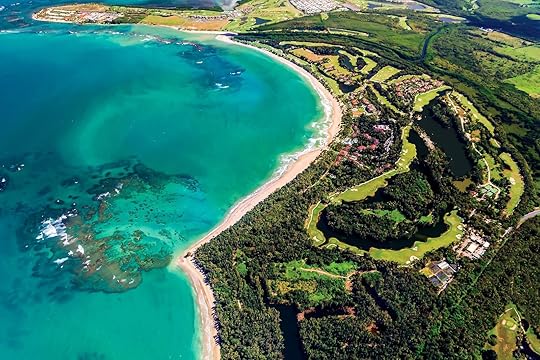
I used to gravitate toward Caribbean destinations like The Bahamas for luxury getaways, but a recent trip to St. Thomas and Puerto Rico shifted my perspective. Though some may view the two US territories as casual and accessible, I found that both islands rival the Caribbean’s most coveted luxury destinations — and they come without the hassle of international travel.
Carrying only a driver’s license as identification, I took a quick four-hour flight from New York to experience two distinct luxury escapes: a couple of nights in laid-back St. Thomas at the island’s Ritz-Carlton, followed by a couple of nights at The St. Regis Bahia Beach Resort in vibrant Puerto Rico. The result was an elegant, exclusive trip that challenged the notion of mass tourism while proving that paradise is closer than you think (and attainable without a passport).
The Ritz-Carlton, St. Thomas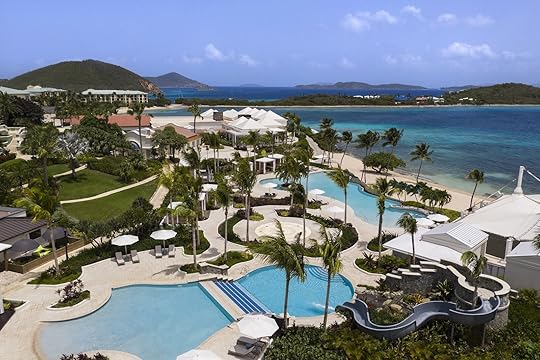
Photo: The Ritz-Carlton, St. Thomas
A scenic 30-minute drive through lush, hilly roads from Cyril E. King Airport leads to The Ritz-Carlton, St. Thomas, the island’s only five-star resort. Upon arrival, the resort feels intimate enough to navigate easily yet expansive enough to offer endless entertainment. With beach access, infinity pools, ocean-view cabanas, a spa, and exclusive access to The Ritz-Carlton’s luxury sailing catamaran, there’s no shortage of ways to unwind and enjoy.
I stayed in a Club Level King Room overlooking the resort and Great Bay’s blue waters. Though I’m not usually a morning person, I found myself waking up at around 6 AM each day just to watch the sunrise from my balcony. My stay included exclusive lounge access and a dedicated concierge service, which was both incredibly helpful and always available.
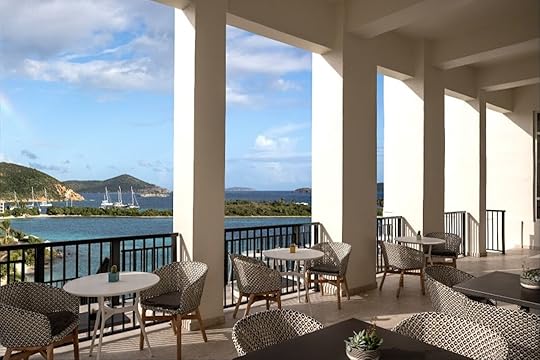
Photo: The Ritz-Carlton, St. Thomas
Each day began with breakfast at Bleuwater, one of the Ritz-Carlton’s on-site restaurants. The French toast is a standout, but it’s the friendly and attentive staff that really makes the experience special. Every restaurant at the resort offers ocean views, but I’d recommend sitting on the patio to take in the scenery while you dine.
In the evenings, Alloro is a must for dinner. The restaurant specializes in Sicilian cuisine, particularly pasta and pizza. Don’t skip the appetizers, which are often the unsung heroes of the menu, especially the bruschetta and burrata. For my main course at Alloro, I opted for the frutti di mare (linguine pasta with semi-dried tomato, mussels, clams, and shrimp in a flavorful sauce) and extra-moist olive oil cake for a sweet finale.
One of the most unforgettable meals I had at The Ritz-Carlton, St. Thomas, was a private dining experience on the beach, nestled beneath seagrape trees. The journey there set the mood before my group was greeted by a lively performer on stilts, dancing to Caribbean music. In the intimate, candle-lit setting, we savored a four-course tasting menu that included smoked foie gras with local tuna and a showstopping poached Caribbean lobster.
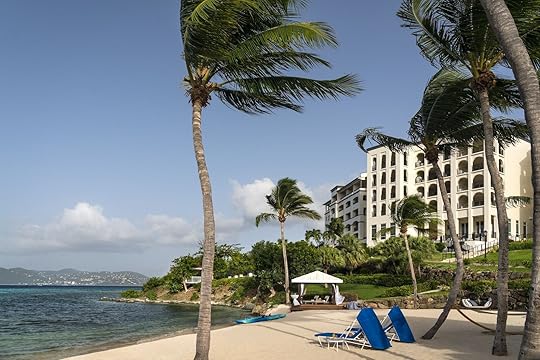
Photo: The Ritz-Carlton, St. Thomas
Dinner by the shore is just one example of the experiences St. Thomas delivers, both on and off The Ritz-Carlton grounds. I kicked off the second day of my visit by carving out time for relaxation, first spending a few hours in one of the resort’s ocean-view cabanas. Though I never did, my inner child wanted to try the water slide nearby — a nice family-friendly touch at a luxurious resort. I also indulged in a rejuvenating massage at the resort’s spa — and learned that The Ritz-Carlton is the only property in St. Thomas that offers ocean-view massages.
When I was ready to balance out the relaxation with some adventure, I took a guided tour of the island. We made a stop at the Yacht Haven Grande marina, where waterfront restaurants, artisan boutiques, and beautiful murals set the tone. Mountain Top, famous for its banana daiquiri and duty-free shopping, was up next. From that vantage point, the view of Magens Bay — a beach hailed as one of the world’s most beautiful — was magical.
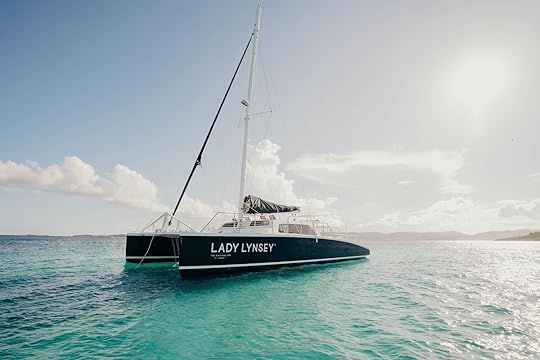
Photo: The Ritz-Carlton, St. Thomas
Taking in the view of Magens Bay was incredible, but there’s no better way to fully appreciate the island’s beauty than a sunset sail aboard Lady Lynsey II, The Ritz-Carlton’s exclusive luxury sailing catamaran. This was a highlight of my trip, complete with an open bar and gourmet hors d’oeuvres that paired perfectly with the dusky scenery.
Together, these experiences gave me a picture of St. Thomas, by sea and by land. But just as I was beginning to settle into the rhythm of island life, after two days it was time to move on to another destination — just a quick 45-minute flight away. I boarded a small aircraft, with no more than 10 seats, and in mere moments was soaring from St. Thomas to Puerto Rico.
The St. Regis Bahia Beach Resort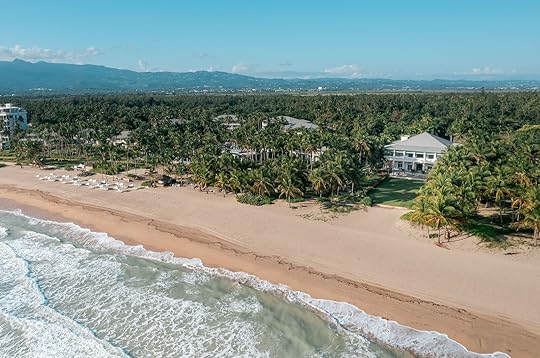
Photo: The St. Regis Bahia Beach Resort
Upon arriving in Río Grande, Puerto Rico, I was off to see another beautiful property: The St. Regis Bahia Beach Resort. There, towering palms and tropical foliage greet you at what was once a coconut plantation and is now a breathtaking sanctuary nestled between the El Yunque Rainforest and the Espíritu Santo River.
The ocean peeks through a large door at the entryway, and welcome drinks await as you step inside. All around, the lush property blends coastal rainforest with direct beachfront access, creating a space where nature’s elegance meets curated luxury. The tranquility is unmatched, and I quickly learned to look forward to the gentle calls of native coquí frogs settling in each night.
My sun-drenched suite was especially restful, opening to ocean views from both the living room and the bedroom. Amenities included a wet bar, a spacious bathroom with a grand tub and rainfall shower, a private outdoor patio, and beach access just steps away. As serene as the setting is, though, the resort also embraces a spirit of celebration, as evidenced by the nightly Champagne sabrage ritual.
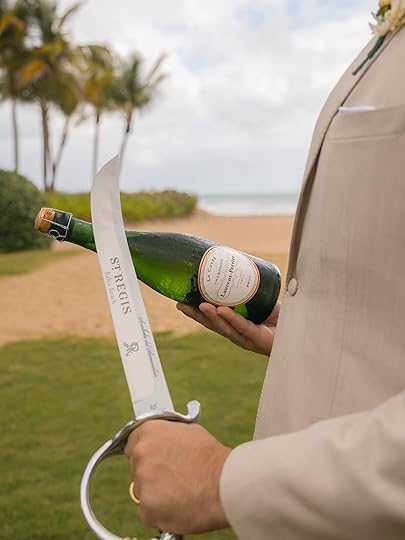
Photo: The St. Regis Bahia Beach Resort
Hosted at Casa Grande, the resort’s main building, the ritual involves opening a bottle of Champagne with a sword to celebrate the transition from day to night. I got to dive deeper into the technique during a Champagne sabrage class on my second day at the resort. After successfully popping our bottles, the group enjoyed its Champagne poolside, a lively spot that’s perfect for mingling and meeting new people.
The beach at the resort, where I was often drawn, would have been another ideal place to savor it. But the two-mile-long crescent beach is just one part of the resort’s natural landscape, and I wanted to explore it all, so I joined a nature tour led by Sebastián Mergal from Soul of Bahia. He shared his vast knowledge of the property’s plant and animal life. We also visited the on-site animal shelter where guests have the option to adopt rescued cats and dogs from the island.
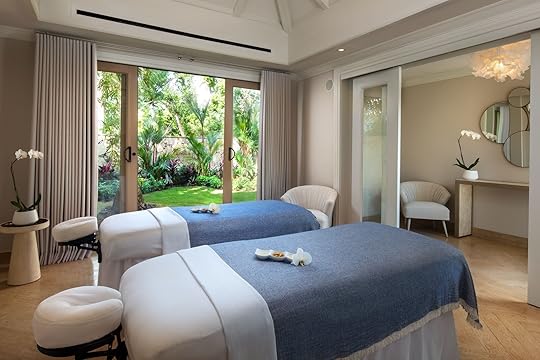
Photo: The St. Regis Bahia Beach Resort
Another activity I enjoyed was taking a complimentary bike ride around the resort, followed by a tennis clinic. I had the chance to train with a coach who’s worked with Shakira. (He shared that she plays barefoot, which almost inspired me to try it myself.) Unwinding at the resort’s Iridium Spa was the perfect next stop. While you don’t have to book a massage to enjoy the extensive amenities — such as the sauna, cold plunge pools, and gorgeous garden area — I couldn’t help but be intrigued by the Encanto Rum Massage, an experience I’ll be sure to try next time.
Although I was enchanted by the resort, I did find myself wishing I’d explored more of Puerto Rico beyond the property. If you’re looking to venture out, Old San Juan is about a 40-minute drive away. While that would make for a nice day trip, rest assured that you don’t need to leave the resort for a culinary experience.
Casa Grande is a great place to start, with a breakfast buffet that has a wide selection of both American and Puerto Rican dishes, along with fresh juices and à la carte options. One standout experience I had at Casa Grande was the Bloody Mary tasting, where I compared the traditional American version with the Puerto Rican Encanto Mary. The latter — made with ají picante (a style of hot sauce) and garnished with crushed plantain chips — was a perfect balance of heat and flavor.
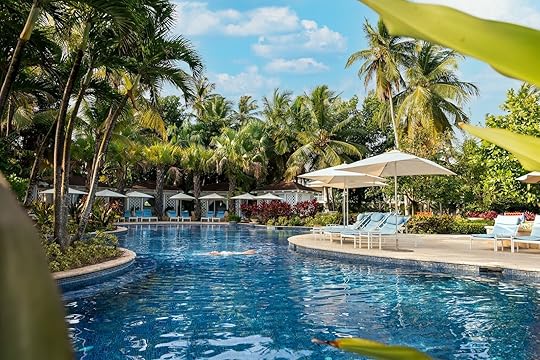
Photo: The St. Regis Bahia Beach Resort
For lunch, Seagrapes serves fresh and flavorful food by the pool, complete with reservable cabanas. In the evening, grab cocktails at The St. Regis Bar before dinner at Paros, a refined Mediterranean restaurant that focuses on locally sourced ingredients. If you’re dining in a group, don’t be afraid to share appetizers and main — when I was there, the lobster rice, in particular, came bursting with flavor and in a big enough portion to feed four people.
For a more intimate dining experience, the resort’s outdoor feast is perfect for special occasions like engagements or family gatherings. My group had the pleasure of enjoying a five-course meal by the beach, paired with Laurent Perrier Champagne. The progression was incredible, from fresh Ossetra caviar, lobster, and king crab to a creative twist on Puerto Rican classics with Kurobuta pork belly confit, local pink beans, and calabaza (pumpkin) risotto.
As my journey wrapped up, I relished how seamlessly my time in St. Thomas and Puerto Rico blended sophistication with ease of travel. The Ritz-Carlton and The St. Regis had a lot to do with that — something I’ll definitely keep in mind the next time I’m looking to plan hassle-free but luxurious getaway. 
November 16, 2024
The 3 US Cities Where Travelers Fear Pickpockets and Scammers the Most

A new analysis of 29 popular tourist cities around the world found that of the top places where travelers talk about pickpocketing and scams the most, three are in the United States.
An Australian travel insurance website “studied pickpocket and scam related keyword mentions on tourism forums” for major cities, as well as mentions of people being worried about petty crimes, and compared those rates to the number of tourists in 2023. It then normalized it per every one million visitors to the city, compared it to info about neighborhood safety, and ranked each city from zero to 10, with 10 indicating the highest safety for personal belongings. And coming in at numbers five, seven, and eight, were three popular US vacation destinations: Las Vegas, Nevada; Orlando, Florida; and New York, New York, respectively.

The top 10 tourist cities where petty crimes are mentioned the most online. Photo: Compare the Market
Las Vegas, Nevada
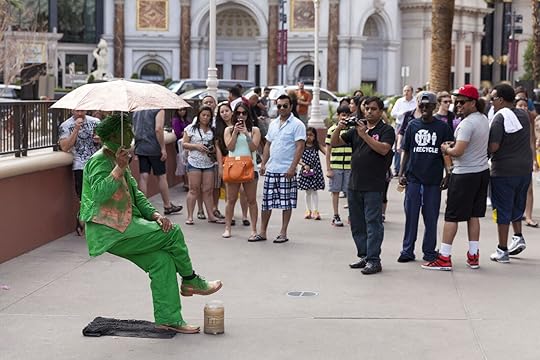
Street performers are totally legal in Las Vegas, but the encouragement to give tips may be interpreted as scams by some travelers, contributing to why some people may perceive it as one of the worst US cities for pickpockets and theft. Photo: Jeffrey J Coleman/Shutterstock
Las Vegas is the home of America’s gambling industry, so it shouldn’t come as a surprise that people mention the usual cliche casino crimes online: dumb travel scams, pick pocketing, and so on. With both nightlife and gambling being popular activities, it’s an environment where individuals may let their guards down more than normal, making them more susceptible to theft. Some mentions could stem from confusion or anger over gambling losses, or unhappiness about high-priced hotel fees and tourist services, which some people may perceive as scams. There are also a lot of street performers and street vendors in Vegas, and some people may see their attempts to solicit donations or payments for performances as scams, too.
The uniqueness of Vegas creates a fertile ground for stories of theft and scams, but it’s actually gotten much safer in recent years. While it’s abandoned its attempt at family marketing, it’s also made huge strides in becoming much safer, transparent, and entertainment-focused than it was in its early days. It faced some safety challenges in the 1970s and 1980s when tourism was booming and organized crime was more active, but today, it’s generally quite safe — as long as you don’t stumble down the street at 3 AM waving your casino winnings after too many free drinks.

Orlando visitors may interpret the many pricey add-on fees available at theme parks as scams, or refer to them as such online after overspending. Photo: VIAVAL TOURS/Shutterstock
Mentions of “pickpockets” and “scams” in online reviews of Orlando, particularly in relation to its major attractions like Disney World, may reflect perception more than reality. Orlandoâs reputation as a family-friendly destination draws millions of visitors annually, but many may be new to traveling or could be families traveling for the first time with children, so they may feel more vulnerable to opportunistic petty crimes. Some people may think even minor inconveniences or misunderstandings are evidence of scams. And Orlando is highly commercialized, with aggressive marketing and lots of expensive, premium add-ons for experiences at theme parks — so it may lead to feelings of being overcharged or taken advantage of, even if the exchange is completely by-the-book.
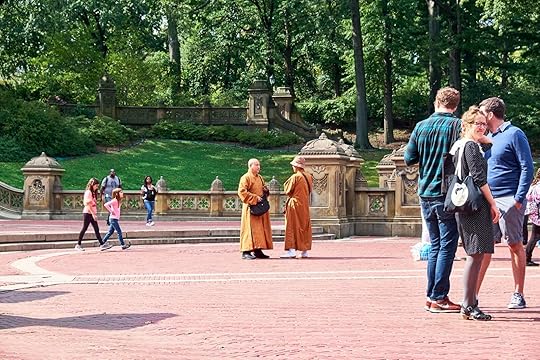
A known scam in NYC is people dressed as monks, asking for donations for a temple or religious voyage. Spoiler: sometimes, they aren’t monks. Photo: Nielskliim/Shutterstock
Historically, NYC experienced high crime rates, particularly during the 1970s and 1980s. That may have ingrained a perception of danger among residents and visitors, especially older travelers today who were alive in those decades. And Times Square used to be considered a little sketchy, especially at night. But since the 1990s, that’s completely changed, and now, it’s packed with tourists every day. Naturally, crowds of tourists attract petty criminals, but serious crimes in the city are at some of their lowest numbers ever.
Of course, New York is a huge city, and it’s likely there are more scammers and petty criminals at work than you’d have in a less densely populated area. But millions of tourists visit NYC every year (more than 62 million in 2023), and while they may feel like they’re getting scammed by hotel fees, or accidentally give a few bucks to a solicitor on the street, it’s very unlikely that you’re going to straight up have your wallet stolen or purse snagged off your shoulder. You can see statistics for all NYC’s petty crimes over time at this link.

Photo: Jacob Lund/Shutterstock
That’s absolutely not what this study means. This news relies on self-reported data from travel forums, which reflect subjective experiences, rather than actual crime rates or reports of theft and scams. So the mentions are influenced by individual perceptions, and could reflect biases toward or against a city, rather than facts. And the focus on mentions in popular tourist destinations like Barcelona, Paris, and Rome introduces bias, as those cities naturally have more discussions online, skewing results toward places with more active travelers. Normalizing the data by tourist numbers is an attempt to adjust for that, but still isn’t a completely fair representation. The analysis shows that these are the cities where petty crimes are mentioned the most by future and past travelers, but not where they actually happen the most.
However, all the cities on the list have lots of tourists, which means there are higher levels of the usual vacation scams, pickpocketings, and petty crimes, just as you’d see in any large city around the world. As long as you’re staying in safe places and take some relatively reasonable precautions, like using a purse with zippers, not leaving your phone or valuables out on tables, and practicing some basic self awareness while you’re sightseeing, you’ll probably be okay.
Within the US, crime rates have been steadily dropping since the 1990s, and with technology like phone tracking, automatic credit card freezes after suspicious spending, and nearly 11 surveillance camera for every 1,000 people in most major US cities, it’s riskier than ever for criminals to event attempt even small crimes. 
November 15, 2024
Stargazing in Some National Parks Could Get Much Better, Thanks to a New EPA Rule
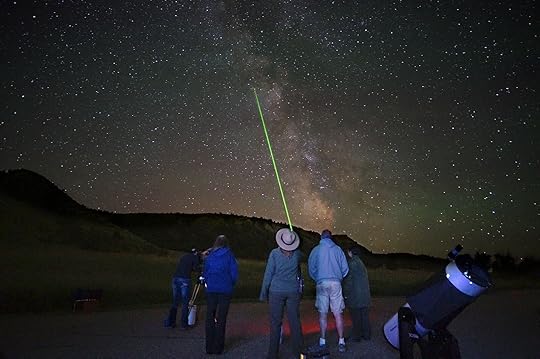
In a significant move to combat climate change, the Environmental Protection Agency (EPA) introduced in November a first-of-its-kind regulation targeting methane emissions from the oil and gas industry. It’s the first time the US government has levied a fee on excess methane production, and is aimed at curbing the unnecessary release of methane, aligning with national and international climate commitments. It will also have the added benefit of making the air cleaner in some national parks well known for stargazing near the country’s largest oil and gas production facilities — though many additional parks could see benefits from cleaner air.
According to the EPA, the regulation will result in “cumulative emissions reductions of 1.2 million metric tons of methane” (the greenhouse equivalent of 34 metric tons of CO2) “through 2035.” The US oil and gas industry emits approximately 6 million tons of methane into the atmosphere each year, and is the largest producer in the country of methane emissions, followed by agriculture and landfills.

A refinery burning excess natural gas in Midland, TX. Photo: Heidi Besen/Shutterstock
Though carbon dioxide, or CO2, is the most prevalent greenhouse gas in the atmosphere (meaning that it traps heat and radiates it back to Earth, rather than allowing it to release toward space), methane is of equal concern. Molecule for molecule, methane is more effective at absorbing and re-emitting heat than carbon dioxide. So each molecule of methane has a far greater impact on climate change than a molecule of COâ.
The regulation is called the “Waste Emissions Charge,” or WEC, and is part of the national Methane Emissions Reduction Program, first announced under the Inflation Reduction Act of 2022. As per the newly released details, oil and gas facilities that emit excess methane above specified thresholds will need to pay a penalty fee. Excess methane is defined as methane released beyond normal limits, usually due to violations like leaks in pipes or or improperly sealed tanks and infrastructure. In other words, methane that gets released in the normal course of producing energy won’t be fined — just methane releases that could have been avoided. Large-scale production facilities will be fined $900 per metric ton of excess methane; the fee will go up to $1,500 by 2026.
In addition to the fee, the regulation also includes incentives for companies to adopt more eco-friendly production and storage methods. In theory, it’s good news for companies, which can avoid paying the fee by taking advance of the government incentives, and a win for the planet, wildlife, and park visitors, which will benefit from having less methane in the air.

Rangers at Theodore Roosevelt National Park. Photo: NPS/Jeff Zylland
Aside from the negative environmental impacts caused by climate change, methane has a negative effect on one of the most popular activities available in America’s midwestern national parks: stargazing. “Venting and flaring natural gas, a practice routinely done by oil and gas operations, impacts dark night skies by contributing to light pollution and impacting visual resources at some of our most iconic national parks,” says Natalie Levine, campaign director of the National Parks Conservation Association’s (NPCA) Clean Air Program. She says national parks near oil and gas production facilities like Carlsbad Caverns in New Mexico, Guadalupe Mountains in Texas, and Theodore Roosevelt National Park in North Dakota are likely to see the most immediately improvements to stargazing and air quality.
Methane has a lifespan of about 12 years. That’s far less than the lifespan of CO2, which can linger for thousands of years. That means methane reduction efforts can be observed more quickly, and reductions in ground-level ozone (smog) can usually be noticed within a few months of making significant methane reductions. Areas with previously high methane emissions may notice ongoing improvements in air quality within a year, if significant reductions are made. A lack of smog and better general air quality will likely mean noticeable improvements for astronomy-related activities.
If you’re hoping to see for yourself whether the stars are any brighter with less methane in the air, you have plenty of options between Carlsbad Caverns, Guadalupe Mountains, and Theodore Roosevelt national parks, all three of which are renowned for stargazing opportunities.
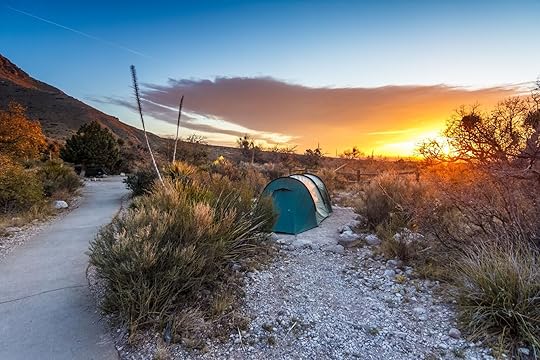
Most campsites in Guadalupe Mountains National Park have excellent stargazing potential. Photo: cvo/Shutterstock
At Carlsbad Caverns National Park, visitors can attend more than half a dozen weekend-long “Night Sky Parties,” held annually between May and October. They’re free to attend, and include the use of telescopes and on-site rangers to guide viewers through the night sky. The park also hosts short night sky hikes through the summer, and local stargazing groups are known to host informal meetups at the park throughout the year.
For Texas locals and visitors, Guadalupe Mountains National Park‘s remote location ensures fairly good stargazing from anywhere in the park. And since its campsites are among the easiest in the park service to secure last-minute, it’s an excellent place for an overnight trip to stare at the stars. For park-goers who want guidance, the park hosts occasional night sky ranger talks throughout the year.
At Theodore Roosevelt National Park in North Dakota, one of the park system’s least-visited sites, it’s also hard to find a bad spot to stargaze. “On clear nights, the Milky Way, planets, stars, and many constellations are visible,” according to the official park webpage, though it also notes “like other areas, there are threats to its relative darkness. Light pollution from oil and gas development surrounding the park is visible in some areas.” The park is home to the Dakota Nights Astronomy Festival each fall, a three-day festival of lectures, workshops, group activities, and plenty of opportunities to observe the night sky. Throughout the summer, there are also occasional free stargazing programs and ranger talks for guests.
View this post on Instagram
A post shared by NPCA (@npcapics)
The National Parks Conservation Association, a nonprofit focused on preserving shared public lands, issued a 2022 report that found 97 percent of parks show some degree of impact from air pollutants (including, but not limited to, methane). That means all national parks could potentially see improvements from the new excess methane fees, though Levine notes that it can be difficult to measure direct impacts of specific laws, since many clean air rules work in concert to deliver change. “So having all the tools in the toolbox to deliver clean air is essential,” she says.
It may be hard to measure if the program works for another reason, too: in January 2025, the Biden Administration will transfer government control to former president Donald Trump, who will serve as president until 2028. But undoing damage caused to the atmosphere isn’t a quick process, and the Trump team’s nominee for managing the Environmental Protection Agency has issued mixed public comments regarding his stance on oil production. EPA director nominee Lee Zeldin has stated he’ll “restore US energy dominance” and “revitalize our auto industry to bring back American jobs”– though he also mentioned a goal to “protect access to clean air and water.”
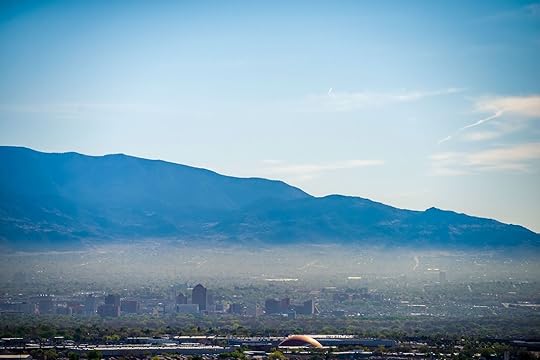
Methane is a large contributor to low-level smog, which is why removing it from the air can improve stargazing opportunities. Photo: digidreamgrafix/Shutterstock
President elect Trump has made much more direct statements on his thoughts toward energy production, often criticizing federal environmental agencies for what he perceives as overreach. In a 2015 interview, he stated, “Environmental Protection, what they do is a disgrace. Every week they come out with new regulations,” and went on to imply he may cut the agency. In his first term, he withdrew the US from the Paris Agreement, an international treaty on climate change of which nearly every major country in the world is member. (Biden recommitted the US to the Paris Agreement on his first day in office in 2021).
Trump has repeatedly said he is undecided on whether the science on human-caused climate change is correct, though research in 2021 analyzed more than 88,000 climate-related studies and concluded that at least 99.9 percent of them attribute climate change mainly to human activities. He has also suggested that the concept of global warming was created “by the Chinese” to hurt American manufacturing, and has often suggested that cold weather means global warming isn’t happening. (Weather and climate are two separate concepts). However, as a national fact-checking website points out, Trump has not used the word “hoax” to describe climate change in several years, and he’s focused many of his campaign promises on issues related to immigration, taxes, and foreign policy, not climate change. So it’s not clear what priority reviewing environmental legislation would have on his list of action items after taking office.
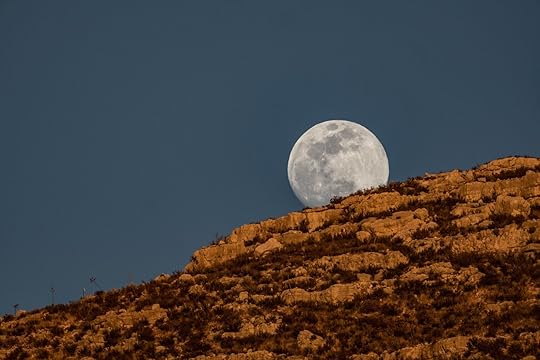
Moonrise over the Guadalupe Mountains of. Texas. Photo: Kelly vanDellen/Shutterstock
With Republicans poised to control Congress come 2025, it’s possible the country’s lawmaking body could vote to undo the Waste Emissions Charge, with or without a presidential directive. But it wouldn’t be a quick process, says Levine. Legislators would first have to modify the Inflation Reduction Act, which involves a multi-step process of drafting, review, debate, and voting. Or, “the Trump Administration could propose new regulations that rescind the regulations that the Biden Administration has finalized under the Methane Emissions Reduction Program,” she says, “but those new regulations would take time and would have to go through public notice and comment.” In the meantime, the EPA would likely be able to enforce the rule, even while debate on its future was ongoing. “The DC Circuit Court has already denied a stay to the oil and gas operations rulemaking while it proceeds through litigation,” she notes. “So the rule is continuing to be implemented even in the face of opposition and litigation.”
That may create enough time for stargazers — and all other park visitors — to notice some improvements to air quality in nearby national parks. 
Korea’s Year-Round Surf Town Is Unlike Any Other For Novices and Experts Alike
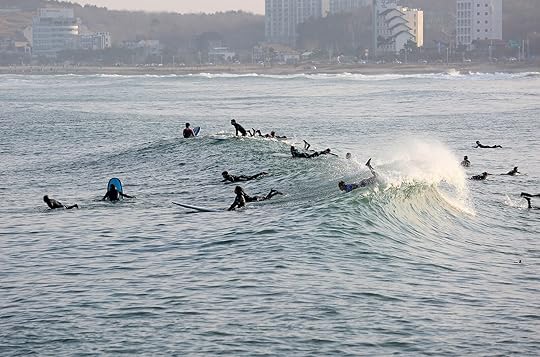
South Korea is known for many things among travelers: lively Seoul, historic villages, vibrant food, and incredible cuisine. Surfing does not typically make the list. But in Yangyang, located in a laid back region of Korea between the roaring east coast ocean shores and the stunning Seorak Mountain Range, surfing is the star of any trip.
Just a two hour drive from Seoul, Yangyang is Koreaâs surf town. Itâs a popular holiday destination not only for its bounty of nature and its easy-access from the capital, but also for its younger population compared to most countryside regions in Korea. The youthful energy here, combined with sprawling natural landscapes, make Yangyang the perfect place to recharge while creating lasting travel memories on sandy beaches.
Busiest in the summer months (though locals surf year-round, even when the sand is covered in snow), the town wakes up to sunrises that light up the deep blue ocean waves with dazzling orange and pink tones. Local surfers hit the waves with the sun. As the day moves on, parked motorbikes and skateboards line the streets as visitors enjoy the sunshine that glimmers on the ocean. When the sun sets behind the mountains, the warm nights are energized by barefoot partiers on the beach and the sound of house music.
These elements all add up to an ideal beach vacation spot for both surfers and those who just want to soak up the scene. The lack of crowds, shallow waters, and sandy bays certainly help.
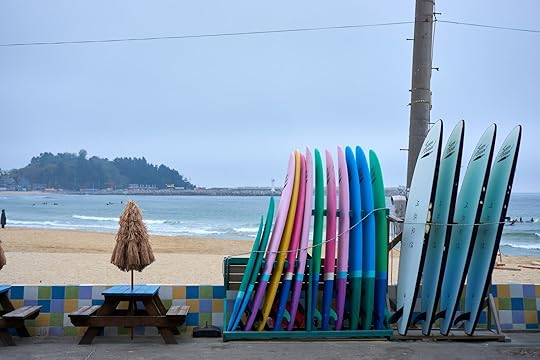
Photo: sssubinpark/Shutterstock
A few things to know before planning a trip: book ahead at surf shops (most have at least one staff member who speaks English, but reservations ensure there are English accommodations for classes), the summer has smaller waves while the fall sees bigger swells, and a KakaoTaxi account will help you more easily get around.
Last, and perhaps most importantly, listen to the locals. Whether youâre a new surfer or an experienced one, itâs always best to ask local surfers about the spot youâre surfing at. Places like Jukdo and Gisamun are both bay areas that usually experience pretty clean break waves but can get fast and strong quickly. Hajodae is a wider stretch of ocean experiencing stronger currents. If you ask the locals, theyâll be happy to let you know the best places to paddle out, where to avoid, and where to start for beginners.
Yangyang surf shops and lessonsSinglefin AleworksView this post on InstagramA post shared by áá µá¼áá ³á¯áá µá« áá ¦áá µá¯áá ¯á¨áá ³ (@singlefin_aleworks)
Singlefin is located in Hajodae, a renowned cultural hub of Yangyang where motorbike and surf culture meet. The best part about learning to surf with Singlefin is without a doubt being able to come back after class to try the delicious Chicago-style deep dish pizzas and locally brewed beers. If youâre lucky, youâll stop in on a night when local DJs are practicing their sets. You can also check out some of the vintage Harley Davidson bikes usually stationed outside, but remember, no touching! Singlefinâs resident surf instructors and most staff are able to communicate in English, making it a convenient place to stop-by at any time.
Singlefin Aleworks: 48-42, Hajodae2-gil, Hyeonbuk-myeon, Yangyang-gun, Gangwon-do 25047 South Korea
Yangyang Surf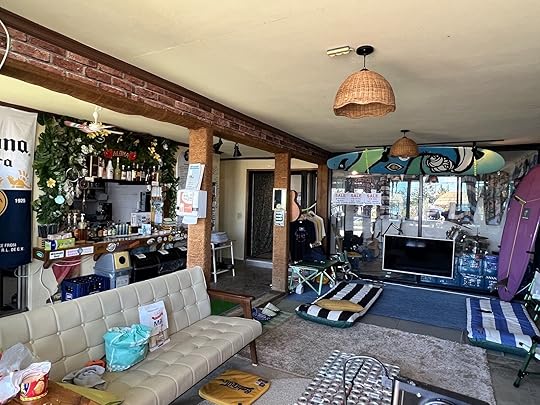
Photo: Abbie Mattingly
An all-in-one stop surf shop in Gisamun Harbour with onsite dormitory accommodation, cafe, bar, and barbecue facilities. Yangyang Surf is perfect for those who donât want to think about too much planning and just simply enjoy beach life. The staff are friendly and they have a hang-out lounge complete with a guitar and drum kit, making it a great place to meet people and have some laid back fun. The surf lessons (always in a small group no more than 10 people) include a board and suit, and there are options for both adults and kids â rain or shine.
Yangyang Surf: Yangyang Surf Cafe, 11 Gisamun-gil, Hyeonbuk-myeon, Yangyang-gun, Gangwon-do
Nalu Surf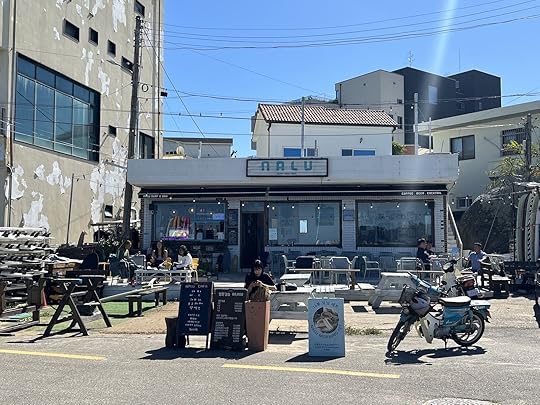
Photo: Abbie Mattingly
Located just south of the main town on Jukdo Beach, which is known for its clean and reliable wave sets, Nalu Surf is the local hub on a good or bad wave day. Nalu is where a lot of locals store their surfboards and will gather for a pre- or post-surf coffee. It is perfectly located on the seafront for enjoying a beverage while watching the local surfers and picking up some tips. Nalu Surf offers lessons and board rentals.
Nalu Surf: 11-10 Saenaru-gil, Hyeonnam-myeonYangyang, Gangwon-do, South Korea
What to do in Yangyang when not surfingSeoraksan National Park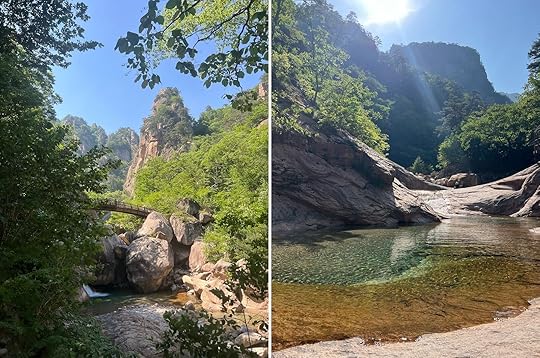
Photo: Abbie Mattingly
Yangyang borders Seoraksan National Park, home to Koreaâs fourth highest mountain, one of the oldest Zen Buddhist temples in the world, and some of the countryâs most stunning natural scenery. Itâs free access with no need for reservations. The trails are suitable for varied abilities, from a 20 minute forest-meditation flat stroll; to two-hour hikes defined by rushing waterfalls, streams, and fresh-water pools; to a 14-hour hike to the peak of Mount Sorak at 5,603 feet elevation. Note that thereâs no swimming in the streams in the park. For that, youâll have to head to the outskirts of National Park grounds (Oseak Valley is a good choice). There are plenty of options, but be sure to check ahead the limitations of each area.
Seoraksan National Park: South Korea, Gangwon-do, Sokcho-si, Seoraksan-ro, 833 KR
Vintage Shopping at Denim SurfboardsView this post on InstagramA post shared by Denimsurfboards Factory (@denimsurfboards)
Take a break from the sunshine and explore the large workshop space that is Denim Surfboards. The creative coffee, soda, and dessert menu makes this a great place to stop for refreshments while scanning rails of vintage denim available for purchase. Donât miss a look at the surfboard workroom, where custom surfboards are made from scratch and painted with unique designs.
Denim Surfboards: 100-3 In-gu-ri, Hyeonnam-myeonYangyang, Gangwon-do, South Korea
Recycled Crafts at DASHView this post on InstagramA post shared by ìììíì©ì¼í° (@dash_yangyang)
Channel your creative side and make an environmentally-friendly souvenir to take home at DASH. DASH is a partially government funded initiative that takes used glass bottles from local beach bars and turns them into beautifully shaped fragments, ready for you to visit and create recycled art including keyrings, windchimes, and vases.
DASH: 5-12 Inguhang-gil, Yangyang-gun, Gangwon-do, South Korea
Naksan TempleWhile Seoulâs temples have their own form beauty contrasted against the urban landscapes, there is a different serenity found while experiencing Koreaâs traditional temples among backdrops of oceans and mountains. Even the local stray cats often enjoy making an appearance. Yangyangâs most famous temple is Naksan Temple, where you can spend an hour or two roaming Naksan park to view the temple and its surrounding pagodas, gates, and traditional bronze bell. Naksan Temple is also open for Temple Stay experiences.
Naksan Temple: 100 Naksansa-ro, Ganghyeon-myeon, Yangyang-gun, Gangwon-do, South Korea
Where to eat in YangyangNinbe BingsuView this post on InstagramA post shared by ëë² (@ninbe_patbingsu)
Bingsu, a shaved ice dessert typically topped with sweet red bean paste, is a classic summer treat in Korea. Thatâs saying a lot in a country filled with trendy dessert cafes. At Ninbe Bingsu, the bingsu is nostalgic yet approachable even for first-time eaters. If youâre not a fan of red bean paste or want to venture out, there are also green tea and chocolate flavors. Youâll leave with a lifelong craving for this summer delight.
Ninbe Bingsu: 6 Inguhang-gil, Hyeonnamm-myeon, Yangyang-gun, Gangwon Province
Gami IzakayaView this post on InstagramA post shared by ìì ì´ìì¹´ì¼ ê°ë¯¸ (@gami_yangyang)
Treat yourself by eating dessert first at Ninbe (it closes at 5 PM), and then head right next door to Gami Izakaya for dinner. Izakayas are a Japanese-style combination of a bar and a restaurant in one. Gami is the perfect opportunity to try the Korean take on the Japanese classics (just as thereâs American-Chinese food, this is Korean-Japanese), as well as sampling local fresh fish and sushi. A cute favorite among locals at Gami is the sushi dessert: a fish-shaped ice cream sandwich cut up to look like sushi.
Gami: 630-6 In-gu-ri, Hyeonnam-myeon, Yangyang-gun, Gangwon-do, South Korea
The MeatroomView this post on InstagramA post shared by ê³ ê¸°ë°© meatroom (ìì ê³ ê¸°ë°©) (@meatroom.yy)
No tourist is going to leave Korea without trying Korean Barbeque, and The Meatroom offers up a Korean classic: âsamgyeopsalâ, thickly sliced pork with crispy, fatty layers left attached, eaten with grilled vegetables and often paired with Korean rice wine soju. Positioned in the backstreets of nightlife central Ingu and right next to surf beach Jukdo, it makes for a great location to start the evening adventures.
The Meatroom: 1st floor, 46-23 Ingujungang-gil, Hyeonnam-myeon, Yangyang-gun, Gangwon-do
Where to stay in YangyangWe hope you love the stays we recommend! Just so you know, Matador may collect a small commission from the links on this page if you decide to book a stay.
Surf shopsIf youâre looking to stay on a budget, most of the surf shops have accommodation package deals. These can vary from on-site dormitories to nearby hotel rooms, so be sure to check out whatâs on offer when booking your surf class. Staying at the surf shops can be a good way to meet other guests from abroad and the rest of Korea. The surf shops also often include food, so you donât have to think about where to eat on your trip.
Bookerâs Motel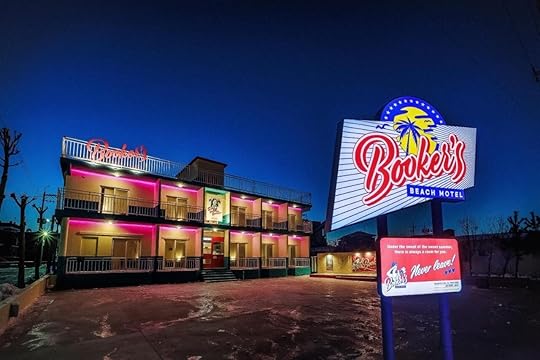
Photo: Booking.com
For those seeking instagram-worthy spots, Bookerâs Motel in Hajodae is a popular place for local brand photoshoots due to its colorful retro American-motel style exterior and interior. The rooms are simple yet comfortable, and the location in the center of Hajodae makes it a great accommodation for exploring local restaurants, cafes, and the neighborhood skatepark. Itâs also a short walk away from some of the most popular beach bars.
Yangyang Jukdo Auto Camping Place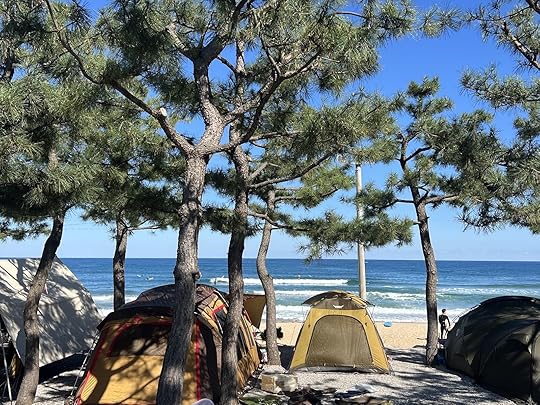
Photo: Abbie Mattingly
To get the full nature-immersive experience, Yangyang has some beautiful options for beachside camping. Jukdo Campsite is hard to rival. Located right behind the sandy shores of Yangyangâs most popular beach, you can watch the surfers from your tent and stay within seconds of all the facilities youâll need: cafes, restaurants, convenience stores, surf shops, beach bars and supermarkets. The supermarkets are often fully-stocked with camping facilities including everything youâll need to set up a beachside barbecue. All you need to bring is a tent.
Getting around YangyangThe most convenient way to get to and around Yangyang is without a doubt by car, so if youâve got your international license itâs worth getting a rental from Seoul. Donât fear if not. Koreaâs Express Bus services can get you to Yangyang from Seoul in 2.5 hours, with bus prices at just $15 one way. Youâll arrive at Yangyang Bus Terminal where you can take a local bus or taxi to your accommodation. Taxi fares start at $3, and if you stay in areas like Hajodae, Jukdo, or Gisamun, youâll be able to walk to the things you need. While itâs possible to get around by bus, the service doesnât run frequently so will require some planning ahead. 
Save Up to $6,000 on Your Next Cruise With These Black Friday Deals
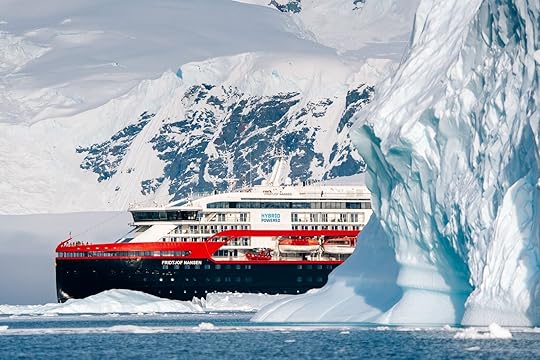
Those who plan to cruise in 2025, whether by taking an expedition sailing around the Galápagos Islands, a food-filled voyage in the Mediterranean, or even an ocean adventure to Antarctica, would do well to book it soon. While it might feel a little early to start planning, the end of the year is a great time to secure the best price for your cruise. The Black Friday cruise deals are out and they will help you save thousands of dollars on next vacation.
Black Friday deals with Royal CaribbeanBlack Friday deals with Princess CruisesBlack Friday deals with Celebrity CruisesBlack Friday cruise deals with HX (Hurtigruten Expeditions)Black Friday cruise deals with Aurora ExpeditionsBlack Friday deals with EcoventuraBlack Friday deals with VikingBlack Friday deals with UniworldBlack Friday deals with Oceania CruisesBlack Friday deals with Victory Cruise LinesBlack Friday deals with Cruise CroatiaBlack Friday deals with MSC CruisesBlack Friday deals with Sea Cloud CruisesBlack Friday deals with HurtigrutenBlack Friday deals with Royal Caribbean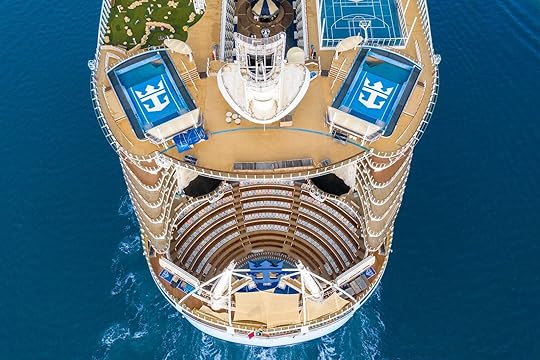
Photo: Wayleebird/Shutterstock
For Black Friday this year, Royal Caribbean is offering 60 percent off a second guest (when booked in the same stateroom as the first guests), and 30 percent off any additional guests booked in the same room. The cruise line is also offering free sailing for kids under the age of 12 for voyages of three nights or longer. Book between November 8 and December 9. Some restrictions apply.
Learn moreBlack Friday cruise deals with Princess Cruises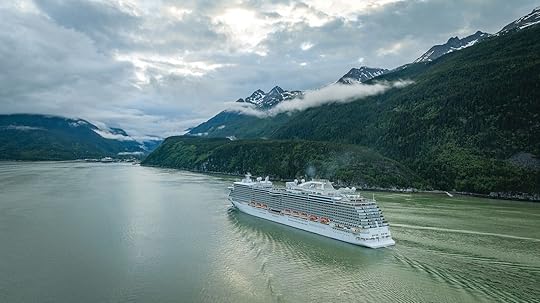
Photo: Princess Cruises / C Trantina
This year, Princess Cruises offering travelers savings on 2024, 2025, and 2026 cruises, including up to 50 percent off cruise fares on voyages all over the globe, 50 percent off deposits, and free sailing for third and fourth guests when booked in the same stateroom as the first and second guests. Book between November 1 and November 25.
Seven-day Western Caribbean with Mexico in November 2025, starting at $559Seven-day Mediterranean with France and Italy in March 2025, starting at $94912-day Panama Canal with Costa Rica and Caribbean in November 2025, starting at $1,18916-day Iceland and Greenland in July 2025, starting at $1,749Read more about what it’s like to cruise with Princess Cruises thanks to Matador Network’s review of the cruise line during a seven-day, food-filled Mediterranean sailing on board the Sun Princess.
Learn moreBlack Friday deals with Celebrity Cruises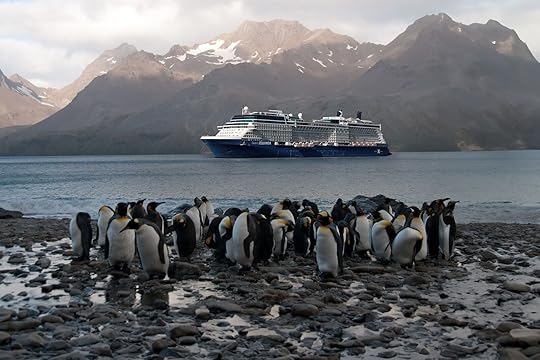
Photo: Celebrity Cruises
This year, Celebrity cruises is offering savings up to 75 percent on the second guest in their stateroom. Book between November 8 and December 9. The offer is applicable for sailings departing from November 8 through May 10, 2027. (Note that this offer is not valid on Galapagos cruises of nine nights or longer.)
Learn moreBlack Friday cruise deals with HX (Hurtigruten Expeditions)
Photo: HX/Kay Fochtmann
HX (Hurtigruten Expeditions) is offering up to 50 percent off select 2024-2025 voyages (including bird watching-focused Audubon Voyages) to Antarctica, the Galápagos Islands, Alaska, the Northwest Passage, Greenland, Svalbard, and South America. Book between November 12 and December 9. The offer is valid for departures from December 1 to October 31, 2025 (inclusive).
Highlights of Antarctica, from $8,596Galápagos — In Darwinâs Footsteps, from $6,774Grand Greenland: Mythical Lands of the North, from $11,016Svalbard in Spring: Return of the Sun, from $6,389Alaska’s Inside Passage and Aleutian Islands — Northbound, from $9,101Read more about what it’s like to cruise to Antarctica with HX thanks to Matador Network’s review of the cruise line during a 12-day trip aboard the MS Fridtjof Nansen.
Learn moreBlack Friday cruise deals with Aurora Expeditions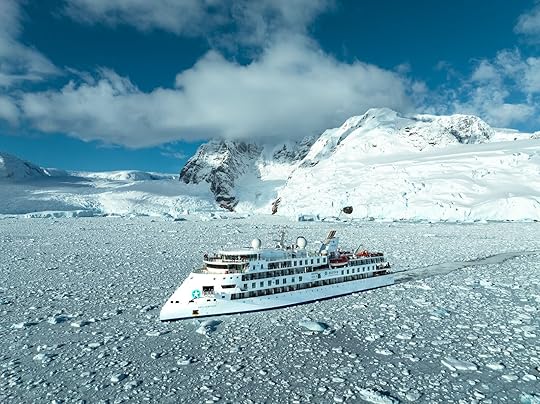
Photo: Aurora Expeditions / Tyson Mayr
Aurora Expeditions is offering up to 25 percent off select Antarctica voyages in 2024 and 2025, up to 20 percent off and free cabin upgrades on select Arctic voyages in 2025, and up to 20 percent off and no solo supplement on select Arctic voyages in 2025. Book between November 18 and December 3.
Svalbard in Depth: 15 days from/to: Oslo, Norway, save 20 percent and get a free stateroom upgradeWild Antarctica featuring the Weddell Sea: 12 days from/to Ushuaia, Argentina, save 20 percentSpirit of Antarctica featuring the Chilean Fjords: 13 days from Punta Arenas, Chile, to Ushuaia, Argentina, save 25 percent.Read more about what it’s like to cruise to Antarctica with Aurora Expeditions thanks to Matador Network’s review of the cruise line during the Sylvia Earle’s maiden voyage to the White Continent.
Learn moreBlack Friday cruise deals with Ecoventura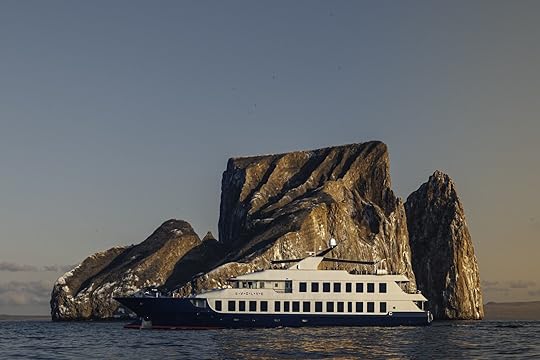
Photo: Ecoventura
This year, Ecoventura is offering 20 percent off more than two dozens select 2025 Galápagos Islands cruises when you book between November 29 and December 6. That is a $2100 per person savings off the published rate of $10,500 per person for double occupancy rooms. For solo travelers, Ecoventura is offering $6,050 in savings per cabin, i.e. a rate of $12,950.
Read more about what it’s like to cruise around the Galápagos Islands with Ecoventura thanks to Matador Network’s review of the cruise line during a seven-day trip aboard on of their three expedition yachts.
Learn moreBlack Friday cruise deals with Viking
Photo: Viking
Viking is offering savings on airfare, deposits, and reduced fares for its river, ocean, and expedition cruises. Book between November 1 and November 30.
River cruises: Up to free international airfare, all-inclusive voyages from $1,999, and $25 depositOcean cruises: international airfare from $799, reduced fares, and $25 depositExpeditions cruises on the Great Lakes: Up to free roundtrip airfare, reduced fares, and $25 depositExpeditions cruises in Antarctica: Up to free international airfare, reduced fares, and $25 depositLearn moreBlack Friday cruise deals with Uniworld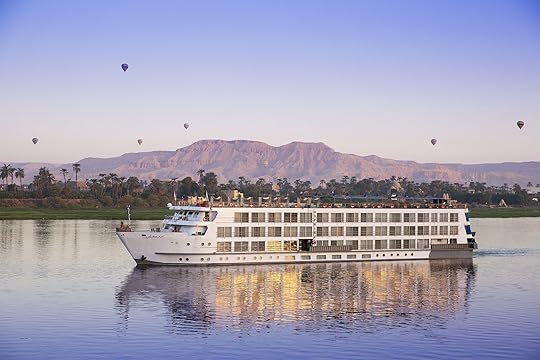
Photo: Uniworld
Uniworld Boutique River Cruises is launching its 12 Days of Christmas event on Black Friday (November 29). There will be daily savings and surprises ranging from 50 percent off popular cruises to free trip extensions, complimentary suite upgrades, waived solo traveler supplements, and more. Offers will be valid for travel on select sailings in 2025.
Learn moreBlack Friday cruise deals with Oceania CruisesThis year, Oceania cruises is offering travelers to make their vacation extra luxurious with a four-categrory upgrade sale on more than 90 sailings throughout 2025. Cruisers can upgrade their stateroom from Inside to Oceanview, Oceanview to Veranda, Veranda to Concierge, or even Concierge to Penthouse Suite. Not only that, but travelers also get to choose one among of the following perks: Unlimited wine, beer, and spirits; shipboard credit up to $1000; or free or reduced airfare. Book between November 15 and December 10.
Learn moreBlack Friday cruise deals with Victory Cruise Lines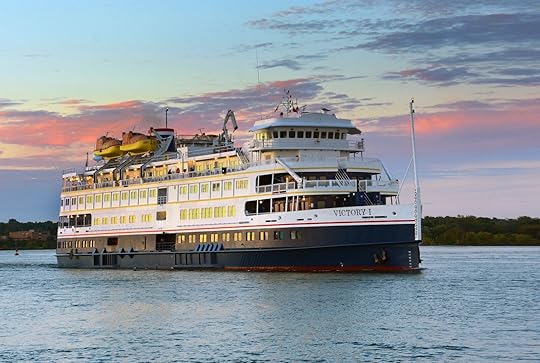
Photo: Victory Cruise Lines
In 2024, Victory Cruise Lines is offering savings of $2,000 per stateroom (based on double occupancy) and one free pre-cruise, premium shore excursion for select sailings departing from Toronto and Chicago in April, May, and June 2025. Book between October 30 and December 4, and enter the promo code ‘BLACKFRIDAY’ at checkout.
Toronto to Chicago: nine or 10-night voyageChicago to Toronto: nine or 10-night voyageRoundtrip Chicago: 14 or 15-night voyageLearn moreBlack Friday cruise deals with Cruise Croatia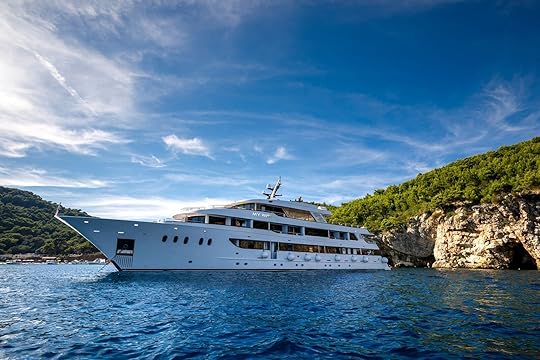
Photo: Cruise Croatia
Luxury small-ship cruise operator specializing in sailings along the Adriatic coast, Cruise Croatia is offering up to $700 off per cabin on select departures between Dubrovnik and Split from May to August 2025. Book between November 29 and December 13.
Learn moreBlack Friday cruise deals with MSC Cruises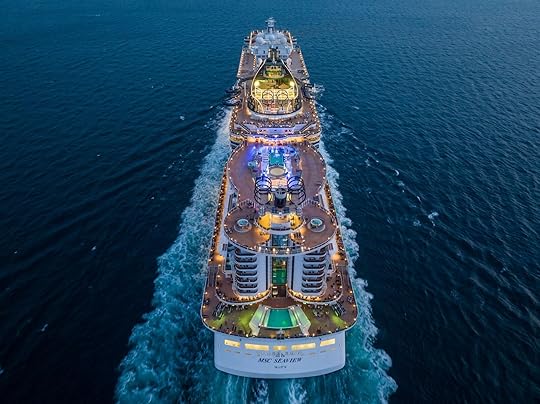
Photo: Wayleebird/Shutterstock
Cruises purchased with MSC Cruises from November 12 to 18 can receive up to 35 percent off the typical cost, with drinks and WiFi included and up to a $400 onboard credit. The deals are spread across the entire line — including the newest ship, MSC World America, that launches from Miami in April 2025, as well as the first MSC cruises in Alaska. The savings can lead to at least $700 to four-night cruises after all is said and accounted for, and at least $1,000 of added value to seven-night cruises.
Learn moreBlack Friday cruise deals with Sea Cloud Cruises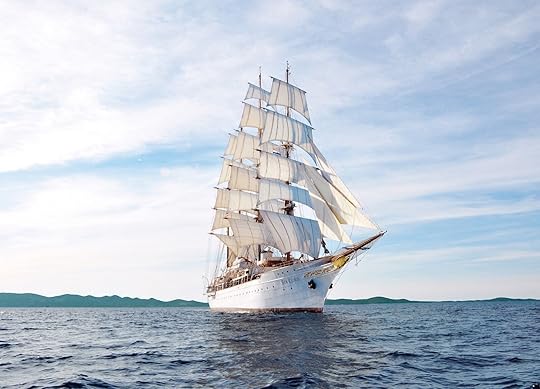
Photo: Sea Cloud
Save up to 65 percent off of the brochure rates for 10 2025 sailings on the Sea Cloud Spirit, Sea Cloud II, and the originally 1931-built Sea Cloud when purchased between November 29 and December 2. All three are true sailing yachts with sails raised by hand. That includes itineraries from Panama City, Panama, to Miami; a Gran Canaria round trip; Barcelona to Nice, France; a St. Maarten round trip sailing in the Caribbean; and more.
Learn more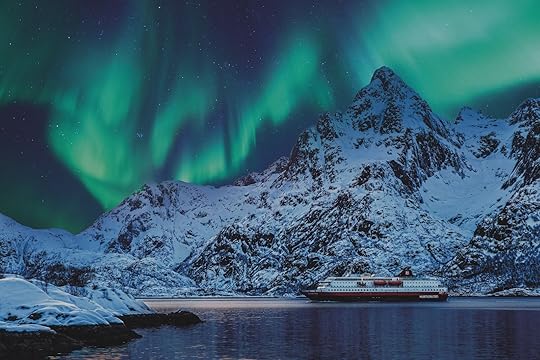
Photo: Hurtigruten
Hurtigruten, Norway’s cruise line with a northern lights guarantee, has deals up to 50 percent off of its normal cruising rates when booked directly with the company during its Black Friday sale running through December 2. That includes 25 percent off of the Signature voyages in the summer for northern lights near the Norwegian coastline and Svalbard archipelago, as well as the North Cape Line. The Original Coastal Express itineraries along 34 ports on the Norwegian coast, northern lights trips that go to Norway and Finland; and the Follow the Midnight Sun routes that include Norway, Sweden, and Finland are up to 50 percent off. 
Matador Network's Blog
- Matador Network's profile
- 6 followers



